Humanitarian Crisis at the
U.S.-Mexico Border
US-Mexico border: Thousands of migrants expelled under coronavirus powers.
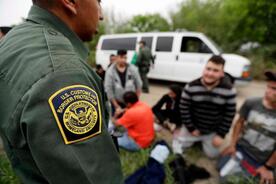
The US has expelled more than 6,300 undocumented migrants on its Mexico border using emergency powers to curb coronavirus spread, officials say. The 21 March public health measure lets officials override immigration laws, expediting removal processes. Critics say the order is being used as an extension of strict immigration policies. Meanwhile, the number of illegal border crossings has fallen amid travel restrictions across the region. The emergency public health order issued by the US Centers for Disease Control and Prevention (CDC) bans the entry of foreigners considered to pose a "serious danger" to the spread of communicable disease. The measure, initially in place for 30 days, was necessary to limit the spread of the disease in crowded places such as border patrol stations or ports of entry, said... (read more)
The vans kept coming: Easter marks anniversary of asylum-seeker crisis in Las Cruces.

It was an early Friday morning on April 12, 2019, when the first vanloads of approximately 70 people were dropped off in front of the Gospel Rescue Mission. The U.S. Border Patrol began releasing Central American individuals and families who had applied for asylum in the United States. Legally present in the United States while their cases were in process, the Border Patrol described them as "processed illegal aliens" and said that a record influx of asylum applicants at the U.S.-Mexico border during the first quarter of 2019 had led to "capacity issues" at Immigration and Customs Enforcement detention centers. The vans kept coming, releasing upwards of a few hundred daily in the coming weeks. Many of them were missing belts or shoes. Many did not speak English, or even Spanish, but indigenous languages. They had... (read more)
The abandoned asylum seekers on the US-Mexico border.
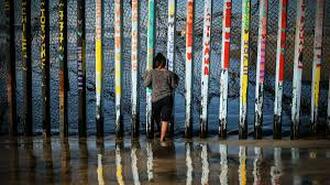
Thousands of asylum seekers remain at risk in Mexican border towns, waiting for humanitarian aid. Mere feet from the US-Mexico border, thousands of asylum seekers have been forced to live in squalid conditions in some of the most dangerous parts of Mexico. They are under threat from drug cartels and dependent on American volunteers for even the most basic necessities. The humanitarian crisis is happening in plain sight, but they're still waiting for desperately needed aid. Some migrants are lucky to find housing in shelters, hotels, or rooms for rent, but for more than 5,000 others, only colorful tents and tarps, some held up by only sticks and stones, stand between them and the elements, even as temperatures drop below freezing. The encampments are clustered around bridges linked to US ports of entry along the Rio Grande, where families and... (read more)
Published; March 26, 2020
The U.S. still can't say how many families it separated.
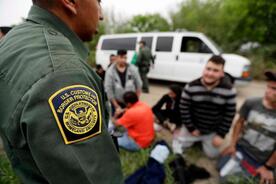
Almost two years ago, Representative Zoe Lofgren of California appeared at a community meeting to address what she called the "egregious situation" at the U.S. border with Mexico. Lofgren, who chairs the House Judiciary Committee's subcommittee on immigration and citizenship, said the U.S. government was taking toddlers from migrant parents and sending them "who knows where." Last week a government report confirmed that, in a startling number of cases, not even the government knows where. At a time when the nation is scrambling to overcome its inadequate preparation for a pandemic, the report is unlikely to get much attention. But President Donald Trump's efforts to deter illegal migration and legal asylum-seeking by traumatizing children and parents rank among this administration's worst moments. "The decision to move forward and intentionally harm children and parents through family separation amounts to criminal action, and at the very least criminal... (read more)
Most Mexicans seeking asylum have seemingly vanished in this border city.

Some immigrants and advocates say that the government is forcing them away; Mexico denies this. At one point, Alberto was far from the only Mexican asylum seeker in this sprawling border city of binational industrialists and workers. They camped out by the hundreds at the Chamizal Park or on international bridges like foreigners in their own land. All waited to press their pleas about persecution to U.S. officials. Then, they were nowhere to be found. Some were forced out of Ciudad Juarez by a Mexican government agency, Alberto and immigrant rights advocates say. Others, like Alberto, were threatened with deportation to violent, crime-ridden Guatemala by U.S. immigration officials. But Alberto stubbornly stayed. He couldn't return home to his Pacific Coast state, where criminal groups, he said, had already killed his.... (read more)
Asylum-seekers waiting in Mexico rarely find lawyers.
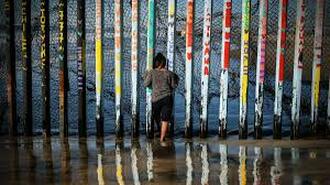
One by one, asylum-seekers from El Salvador and Honduras who are waiting in Mexico for court hearings in the United States appeared before Judge Lee O'Connor to explain why, after months of effort, they couldn't find an attorney. One man said he repeatedly tried names on a list of free or low-cost attorneys that U.S. Customs and Border Protection provides. No one answered, and he began looking for attorneys in Tijuana, who struck him as dishonest. The judge warned that Mexican attorneys may not be licensed to practice in the U.S. Through sobs, a Salvadoran woman with three children said phone calls "rang and rang and rang and nothing happened." She said no one responded to a voicemail and she once heard nothing but music. "Our law is very complicated," O'Connor told her in November before offering her a third extension to try to track down an attorney. "Immigration law is considered one of the most complicated areas of the law there is. ... Even lawyers... (read more)
Published: March 11, 2020
Remain in Mexico: asylum seekers at border see hopes raised then dashed.
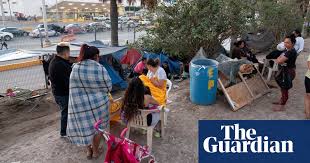
Many hoping to enter the US but kept out by Trump policy remain stuck in squalid and dangerous conditions. Esmeralda Martínez got the news via a WhatsApp message: a court had invalidated the US "remain in Mexico" program, which had obliged her to stay put south of the border while her asylum claim was heard. It had been six months since she fled Guatemala after the murder of her husband. For a brief moment, it seemed she and her 13-year-old daughter Jazmín might be able to move on from the dismal frontier encampment where they have been stranded. She packed her court papers in a black and yellow backpack, stuffed her clothes into a suitcase and prepared to move on. But just hours after Friday's ruling, the same three-judge panel suspended its own order pending fresh arguments, leaving the policy... (read more)
Lawyers struggle to remotely represent asylum-seekers in 'Remain in Mexico' program.
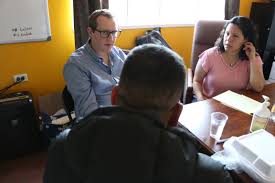
Many US immigration attorneys - most of them pro bono - have found themselves remotely representing asylum-seekers stuck hundreds of miles away in Mexican border towns. The attorneys say this introduces unprecedented difficulties to their jobs - and could violate clients' right to due process in the US. The first time immigration attorney Christina Brown saw her client's face was the first time they appeared in court together in January - and even then, the two women weren't in the same room. Brown's client, Alicia, an asylum-seeker from Honduras, stood in a converted shipping container on the Mexican border. After being forced to wait for her US court date in northern Mexico, Alicia had come back to the border crossing, where US officials ushered her into a makeshift "tent court" connected to the US point of entry in Laredo, Texas. From there, a camera broadcast Alicia's fuzzy image onto... (read more)
In a village of tents, refugees make a life as they wait on US asylum.
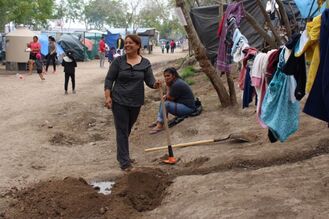
"Alicia! Alicia!" Children's voices rang out and they crowded around as Notre Dame de Namur Sr. Mary Alice McCabe - or "Alicia," by her name in Spanish - made her way through the refugee tent camp in Matamoros, Mexico. Children are everywhere in the camp, which has formed in the wake of the MPP - Migrant Protection Protocols, or "Remain in Mexico" policy. Enacted by the Trump administration beginning in January 2019, this is one of many harsh measures used to deter refugees, forcing them to remain in Mexico until their asylum claims are processed. Matamoros has an estimated 2,500 people in hundreds of small tents that stretch along the southern bank of the Rio Grande and atop the levee in front of the Gateway International Bridge in what has grown into a sprawling tent city on federal land, reluctantly tolerated by the Mexican government. Matamoros, once a medical tourism and nightclub hotspot a quick walk from Brownsville, Texas, has been declared... (read more)
Published: February 26, 2020
The border crisis continues, only now migrants wait 2,000 miles south.
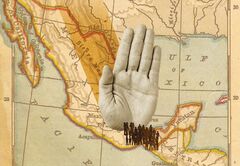
Mexico is now holding the immigrant caravan in a town near its own southern border. The border crisis hasn't ended; it just moved 2,000 miles south. During a visit to Tapachula, in southern Mexico, we found the small city coping with the kind of overcrowded detention centers, dangerous crossings and police actions associated with the U.S.-Mexico border. Shortly after we left, Mexican authorities rounded up and deported hundreds of people in brutal scenes that echoed the anguish on the Rio Grande in recent years. "We've been locked up here for hours," said one Honduran woman on a recording sent to us from a makeshift dormitory in what our source told us was a Tapachula immigrant shelter. "They say that buses are coming to take us to Tabasco, but there's been nothing so far." More than 2,000 people from the same caravan that came north together were eventually deported, many in flights from Tabasco to Honduras, according to a press release from the Mexican immigration service. The number of immigrants showing up at the U.S. border has fallen by tens of thousands in... (read more)
Dozens of transgender migrants arrive at border, want asylum in US.
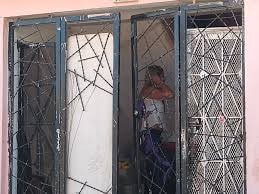
Central Americans share horror stories about hate crimes that drove them to embark on dangerous 2,000 mile trek. Boys are supposed to be boys in rural El Salvador, so for more than a decade, Tania Rivera suppressed her desire to be a girl. It wasn't until well into adulthood that, working as an accountant's assistant in the city of Santa Ana, she felt strong enough to express her gender identity. That's when the violence began. Rivera says she was insulted and mocked on her way to work each morning. Then gang members started to chase her. The last straw was when three men got off a car to abduct her, telling her she would die that day. She was able to run away once more. Since then, her legs have carried her 2,000 miles north. "El Salvador is a very old-fashioned country. Trans girls are not accepted. We are rejected, we are discriminated and some of us are murdered," she said. "I want to live in a place where I don't feel threatened while going to... (read more)
Ministries unite to open new shelters on U.S.-Mexico border.
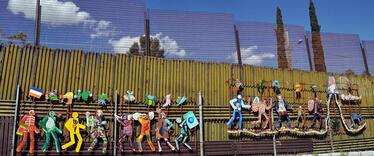
Fellowship Southwest and its partners working along the U.S.-Mexico southern border recently celebrated the opening of a new shelter for refugees 100 miles west of Juarez. The facility was established in the village of Palomas, which is located in the Mexican state of Chihuahua. The coalition behind the project included the Migrant Shelter Network (Red de Albergues Migrantes), Christian Mission Concerns in Waco, regional nonprofits and Fellowship Southwest, a regional effort of the Cooperative Baptist Fellowship. The village and state also contributed to the project. "Although Palomas is isolated and surrounded by hostile terrain, asylum seekers still flow through," Fellowship Southwest said in a Feb. 7 blog post. "They strive for passage into the United States at the border crossing on the northern edge of town." Fellowship Southwest also... (read more)
Published; February 13, 2020
Mexico: An estimated 700 migrant children stranded in Matamoros near U.S. border.

An estimated 2,200 migrants and asylum seekers, including 700 children, are effectively stranded in the Mexican border city of Matamoros as they wait for their asylum cases to work their way through the U.S. court system. Conditions for children and families on the ground, many of whom have been waiting at the border for weeks or months, are difficult because of insecurity and limited access to essential services. UNICEF Mexico is now responding to the humanitarian situation in Matamoros to reach children and families in need. These efforts include creating child-friendly spaces and providing psychosocial support; providing Early Childhood Development (ECD) interventions; coordinating water, sanitation and hygiene services; and working in the community to protect migrant children and keep families together. UNICEF strongly urges Mexican institutions to implement the Protocol for the Protection of Migrant Children, developed by the Government. The Protocol establishes the... (read more)
Apprehensions at U.S.-Mexico border drop for 8 straight months.
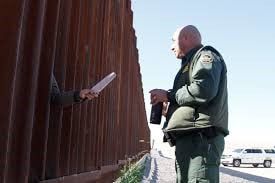
The number of border apprehensions 0has dropped for the eighth straight month, following crackdowns by the Trump administration that include forcing asylum seekers back over the U.S.-Mexico border to wait out their claims, a Homeland Security official said Monday. The official said the number of encounters with border officials over the past four months was 165,000. A year earlier during the same time it was about 242,000. The official spoke to The Associated Press on condition of anonymity because the official results have not been released. The tally for the month of January was about 36,000, including apprehensions of people crossing illegally and migrants who were declared inadmissible by border officers at a port of entry. It was a 10 percent decline from December. The steep decline will almost certainly figure heavily into President Donald Trump's State of the Union address Tuesday. Trump has made cracking down on immigration - legal and... (read more)
Mexican border city scrambles to accommodate Brazilians sent back from US.
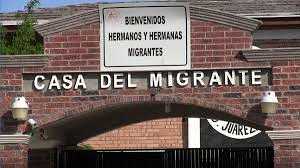
Mexican authorities are scrambling to deal with a new challenge: how to accommodate hundreds of Brazilians sent to Juarez by U.S. Customs and Border Protection (CBP). Local officials on Wednesday estimated that between 200 and 400 Brazilians were waiting here for a resolution to asylum claims filed in the United States. The U.S. Department of Homeland Security in late January expanded the Migrant Protection Protocols (MPP) program to include Brazilians. CBP has started returning them to Mexico, but Juarez officials said they have lost track of many of them. "A couple of dozen are in the usual places, but very few have accepted (invitations) to the shelters," said Mario Dena, the ranking Chihuahua state officer in Juarez, referring to church-run temporary migrant refuges like Casa del Migrante. The concern here and among migrant advocates in neighboring El Paso, Texas, is...
(read more)
(read more)
Published: January 29, 2020
Interpretation crisis at the border leads to deportation of Mayan-language speakers seeking refuge.

As the U.S. continues to use hostile policies to stop people from seeking refuge and asylum in the United States, we look at a key problem that is preventing migrants from getting due process, and in many cases getting them deported: inadequate interpretation for indigenous asylum seekers who speak Mayan languages. Guatemala has a population of 15 million people, and at least 40% of them are indigenous. In the past year, a quarter of a million Guatemalan migrants have been apprehended at the U.S.-Mexico border. At least half of them are Mayan. Many speak little or no Spanish. This is the focus of a new report in The New Yorker magazine titled "A Translation Crisis at the Border." We speak with the article's author, Rachel Nolan, in Guatemala City. We also spoke with Odilia Romero, Zapotec interpreter and a longtime... (read more)
9 parents separated from families return to children in US.
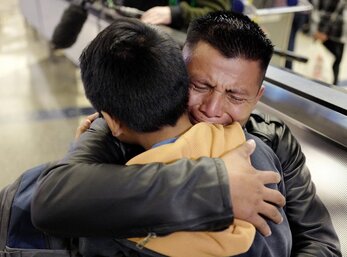
As his long-lost son walked toward him in an airport terminal, a sobbing David Xol stretched out his arms, fell to one knee and embraced the boy for about three minutes, crying into his shoulder. He had not held the child since May 2018, when border agents pulled then-7-year-old Byron away inside a detention facility. They were separated under President Donald Trump's zero-tolerance policy - the father deported to Guatemala, the son placed in a series of government facilities before ending up with a host family in Texas. Xol was one of nine parents who won the exceedingly rare chance to return to the U.S. after being deported under family separation. They arrived Wednesday at Los Angeles International Airport to be reunited with children they hadn't seen in a year and a half or longer under the order of a federal judge who found the U.S. government had unlawfully prevented them from seeking asylum. After embracing, David... (read more)
Retiring Border Patrol chief: Crisis at southern border demands action by Congress.

There is an old saying in the Border Patrol that with these tools, an agent can fix just about anything. We patrol rugged and remote areas, and we have long relied on our own ingenuity to communicate, fix equipment and even build early versions of border barriers and technology. But Border Patrol ingenuity alone cannot address the border security and humanitarian crisis we've been facing this past year. I joined the Border Patrol 25 years ago because of my strong belief in our border security mission. Our mission is to address all threats at our border, to stop everyone and everything from crossing between authorized points of entry. The threat of transnational criminal organizations is ever-present as they smuggle drugs, weapons, cash and people in support of their criminal enterprises. Through generations of experience, Border Patrol developed a set of tools to address cross-border illegal activity: technology to give us awareness of illegal activity, physical barriers to slow or stop it and agents to respond and make an arrest. In my 25-year career, I've personally seen these tools deliver true border security results in places like Douglas and Yuma, Arizona and El Paso, Texas.
Published: January 16, 2020
US agency formalizes border medical plan after migrants die.

U.S. Customs and Border Protection on Tuesday formalized a medical plan formed in the wake of a massive surge of migrant families to the U.S.-Mexico border and a series of deaths in immigration custody. The goal was to increase medical care and efficiency. According to the directive, the codified plan includes a sustainable proposal for triage, plus screenings for respiratory systems, instructions to isolate sick migrants to prevent the spread of disease, vaccines for staff and a supply of face masks and hand sanitizer. More than 500 medical professionals are on contract to help administer care. The outcry over medical care began when two children died in Border Patrol custody in December 2018, followed by the deaths of others this year. A year later, Homeland Security's watchdog found no misconduct or wrongdoing in the deaths of the two Guatemalan children, a 7-year-old girl and an 8-year-old boy. At the height of the crisis, tens of thousands of migrant families crossed into the U.S. and were held in cramped, overcrowded conditions. A flu outbreak in May sickened more than... (read more)
Yielding to U.S. pressure, Mexico clamps down on migrants.
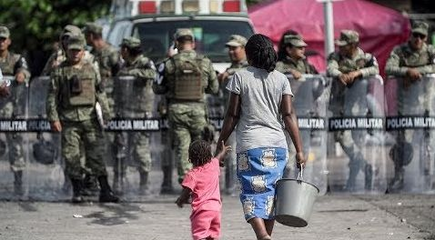
Thousands of migrants from around the world, many seeking asylum, have been trying to reach the U.S. by flying to South America and taking the long trek north. But after pressure from President Trump, Mexican authorities are stopping many migrants from passing through their country, stranding them in the city of Tapachula. Special correspondent Nadja Drost and videographer Bruno Federico report. Protesters: "Libertad! Libertad!!" Nadja Drost: Calls for freedom and the chance to leave what migrants are calling an outdoor prison: the city of Tapachula in Southern Mexico. They've been stuck here for weeks to several months, and they want out. Luis Villagran: No one is going to stop migration! Nadja Drost: But that's what Mexico is trying to do: stop migrants from... (read more)
US starts sending asylum-seekers across Arizona border.
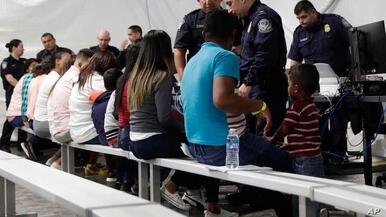
The U.S. government on Thursday began sending asylum-seekers back to Nogales, Mexico, to await court hearings that will be scheduled roughly 350 miles (563 kilometers) away in Juarez, Mexico. Authorities are expanding a program known as Remain in Mexico that requires tens of thousands of asylum-seekers to wait out their immigration court hearings in Mexico. Until this week, the government was driving some asylum-seekers from Nogales, Arizona, to El Paso, Texas, so they could be returned to Juarez. Now, asylum-seekers will have to find their own way through dangerous Mexican border roads. About 30 asylum-seekers were sent to Nogales, Mexico, on Thursday, said Gilda Loureiro, director of the San Juan Bosco migrant shelter in Nogales, Sonora. Loureiro said the migrants hadn't made it to the shelter yet but that it was prepared and has a capacity of about 400. "We're going to... (read more)
Published: December 12, 2019
Bishop Mark Seitz pens pastoral letter 'Night will be no More.

Following the concluding Celebration of Mass of the Hope Border Institute's 2019 Teach-In: Jornada por la justicia, Most Rev. Mark J. Seitz, Bishop of the Diocese of El Paso, signed and released a pastoral letter on the theme of racism and the El Paso shooting which took place on August 3rd, 2019. "The pastoral letter, entitled, Night Will Be No More, represents a major statement from the Catholic community on the intersecting issues of race, gun violence, racially motivated attacks on Latinos in the United States and the ongoing militarization of the border," Diocese of El Paso officials shared. "It will be the first major statement from the Catholic Church on the theme of racism from the perspective of the border and connects the El Paso shooting to historical racism at the border and the recent resurgence of racism against Latinos in the United States," officials added. The signing... (read more)
Honduras, El Salvador to open new consulates as migrants remain stranded at US-Mexico border.
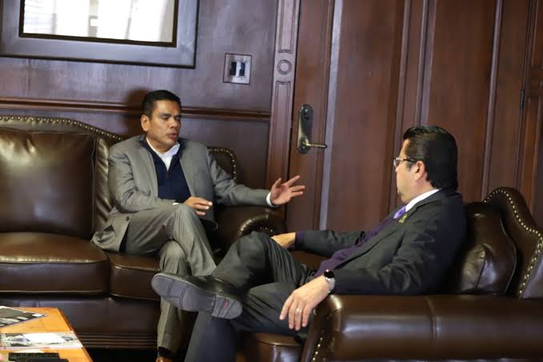
Honduras and El Salvador plan to open consulates in the Mexican border city of Juarez to serve thousands of their citizens returned to Mexico under the United States' Migrant Protection Protocols (MPP) program. Alden Rivera Montes, the Honduran ambassador to Mexico, has informed Juarez authorities his government is looking for a building for a new consulate where five permanent staff members will provide protection services and documents for its citizens. Rivera estimates that more then 2,500 Hondurans who presented themselves at El Paso ports of entry were returned to Juarez to await the outcome of asylum petitions in the United States. Those Honduran migrants are either staying in shelters because they have run out of money or are living on their own with resources provided by relatives in the United States or by working temporary jobs in Juarez, Rivera told Juarez Mayor Armando Cabada during a meeting, the mayor's office said. Rivera also informed Juarez authorities that last month he... (read more)
Church nativity depicts Jesus, Mary and Joseph as family separated at border. "
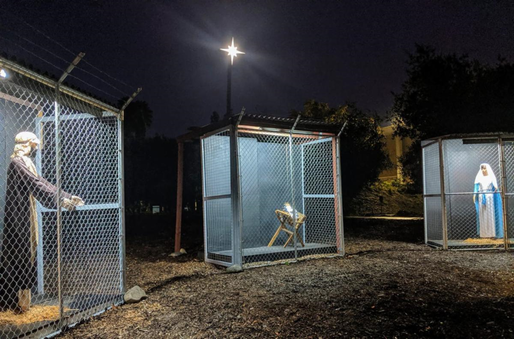
What if this family sought refuge in our country today?" the Southern California church said in a Facebook post.
A photo posted Saturday on Facebook by a senior minister at Claremont United Methodist Church, east of Los Angeles, showed the Holy Family inside three chain link cells topped with razor wire. In a statement posted by the minister, Karen Clark Ristine, the church said that after fleeing a tyrant king, Jesus, Mary and Joseph became "the most well-known refugee family in the world." "What if this family sought refuge in our country today?" the church said. "Imagine Joseph and Mary separated at the border and Jesus no older than two taken from his mother and placed behind the fences of a Border Patrol detention center." Inside the church, the family is reunited in a separate nativity scene, the statement said. Ristine could not be reached for comment Sunday. Thousands of children, many of them from Central America, were... (read more)
A photo posted Saturday on Facebook by a senior minister at Claremont United Methodist Church, east of Los Angeles, showed the Holy Family inside three chain link cells topped with razor wire. In a statement posted by the minister, Karen Clark Ristine, the church said that after fleeing a tyrant king, Jesus, Mary and Joseph became "the most well-known refugee family in the world." "What if this family sought refuge in our country today?" the church said. "Imagine Joseph and Mary separated at the border and Jesus no older than two taken from his mother and placed behind the fences of a Border Patrol detention center." Inside the church, the family is reunited in a separate nativity scene, the statement said. Ristine could not be reached for comment Sunday. Thousands of children, many of them from Central America, were... (read more)
Record number of African migrants at U.S.-Mexico border.
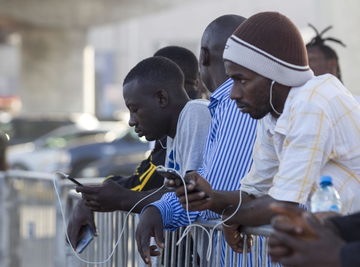
The number of migrants from African countries in Mexico who have had contact with Mexican immigration officials has increased from 460 in 2007 to more than 5,800 in 2019. The number of African migrants heading to the U.S. through Mexico has more than doubled this year - from roughly 2,700 in 2018 to 5,800 today, according to data from the federal government. That figure has been steadily rising since 2007 - the year the Mexican government began including migrants from African countries who have contact with immigration officials in their annual migration reports - when the number was 460. And that dramatic increase has been mostly left out of U.S. immigration conversations, activists say. "Even within the immigration movement, you see a lack of... (read more)
Published: November 26, 2019
US-Mexico border sees surge in African migrants, who face limited options.
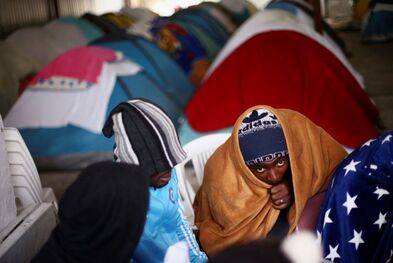
While most migrants apprehended at the U.S. border are from Central American countries, a growing number of Africans are making their way to the United States, via the same routes traditionally used by Central Americans and Mexicans. Fleeing ethnic cleansing and political volatility in their respective countries, the migrants are escaping Central African nations like Cameroon, the Democratic Republic of Congo and Angola. The surge in numbers of this new population surprised border patrol agents who are more accustomed to Spanish-speaking migrants. In June, border patrol apprehended a record number of African refugees and immigrants from 19 countries. According to the Department of Homeland Security, a majority of apprehensions happened along the Del Rio sector in Texas, consisting mostly of family units and single adults. "The introduction of this new population places additional burdens on processing stations, to... (read more)
Trump administration's 'Remain in Mexico' program to shuttle migrants from Tucson to El Paso.
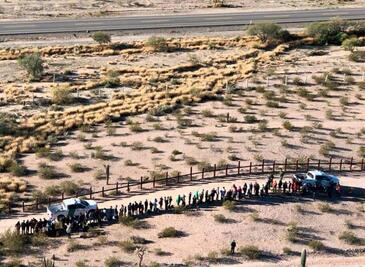
Concerned about the rising number of migrant families crossing from Mexico into the Arizona desert, Department of Homeland Security officials are preparing to bus border crossers more than 300 miles east into Texas so they can deposit them in Mexico instead of releasing them in the United States, according to two Trump administration officials. Homeland Security officials said Friday that they will expand the Migrant Protection Protocols (MPP) program to the Tucson region, one of the last major areas on the border that has not been diverting asylum seekers to Mexico to await their U.S. immigration court hearings. Officials deployed the program after a modest uptick in family crossings in the Tucson sector at a time when the number of migrants crossing the border is declining almost everywhere else. Officials view MPP as their chief line of defense on the border and worried that smugglers had identified Tucson as a weak spot because officials have been unable to... (read more)
Members of Congress tour US-Mexico border in San Ysidro after migrant's in-custody death.

Members of Congress visited the U.S.-Mexico border in San Ysidro on Friday in response to the in-custody death of an asylum seeker from Cameroon. The Congressional Black Caucus (CBC) toured the border before holding an afternoon press conference regarding the death of Nebane Abienwi, 37, while in U.S. Immigration and Customs Enforcement custody last month. Abienwi was admitted to Sharp Chula Vista Medical Center on Sept. 26 after he experienced a hypertensive event at the Otay Mesa Detention Center. He was unresponsive and appeared paralyzed on his left side when he arrived at the hospital. He was pronounced dead on Oct. 1. The cause of his death was ruled brain death caused by a brain hemorrhage. The CBC says they want to call attention to the mistreatment of black immigrants. "Thousands of African and Caribbean immigrants who immigrate to the United States of America are treated as if they are invisible," said Rep. Karen Bass, Chair of the CBC, said. "Many arrived in South America and then walked... (read more)
Published: November 13, 2019
What's happening at the U.S.-Mexico border in 5 charts.
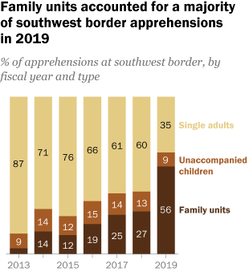
Border Patrol agents apprehended more migrants at the U.S.-Mexico border in fiscal 2019 than in any year since fiscal 2007, according to new federal data. The influx of migrants has strained border facilities and become a major policy focus for President Donald Trump's administration. Below is a closer look at the shifting dynamics at the southwestern border, based on the new numbers from U.S. Customs and Border Protection, the federal agency tasked with patrolling the border. 1. Apprehensions at the U.S.-Mexico border more than doubled between fiscal 2018 and fiscal 2019 but remained below historical highs. There were 851,508 apprehensions in the 2019 fiscal year (October 2018-September 2019), a 115% increase from the previous fiscal year and the highest total in 12 years. Still, the total remained far below the 1,643,679 apprehensions recorded in... (read more)
Immigration official: U.S.-Mexico border crisis not over.
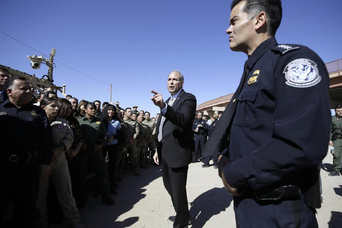
A top U.S. Border Patrol official has a warning: The crisis at the U.S.-Mexico border is not over. Even though crossings have been down over the past few months and news of custody deaths and teeming facilities full of children and families has faded from front pages and talking points of politicians, the number of migrants coming over border is still high. And resources are still stretched. "It is kind of a new norm. We're at risk at any time," if some recent deterrent efforts are blocked by the courts, such as a policy forcing asylum seekers to wait out their claims in Mexico, Brian Hastings, chief of law enforcement operations at Border Patrol, said in an interview with The Associated Press. "We will go back, mark the words, we will go back to the crisis level that we had before." Immigration has been a top issue since President Donald Trump took office almost three years ago, with Democrats heavily critical of his administration on border conditions. But Washington is now dominated by talk of... (read more)
DHS worker says Trump's immigration policies left him with no choice but to resign: 'We are America. We can do better.'

A Homeland Security worker says he has resigned from his role after years of service because he can no longer align himself with President Donald Trump's immigration policies. In a scathing account published by The Houston Chronicle Travis Olsen explains what led him to the decision that he could "no longer be party to an intimidating, mismanaged and unwelcoming administration that is openly rebellious to the values our government has espoused for centuries." "For nearly a decade I have been a frontline civilian with the Department of Homeland Security, never seeing my work as political or driven by partisanship. I have served with purpose, with duty and gratitude to the values of our country," Olsen said, adding: "I agree with President George W. Bush's definition of our nation, 'America can be a... (read more)
Published: October 30, 2019
More than 5,400 children were separated from parents at Mexico border since July 2017, ACLU says.
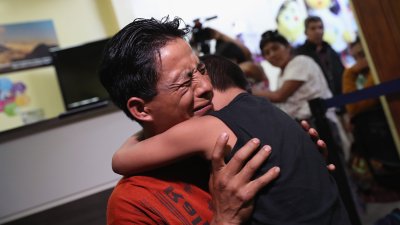
The American Civil Liberties Union says U.S. immigration authorities separated more than 1,500 children from their parents at the Mexico border early in the Trump administration, bringing the total number of children separated since July 2017 to more than 5,400. The ACLU said Thursday the government told its attorneys that 207 of the 1,556 children separated between July 1, 2017, and June 26, 2018, were under 5. A federal judge in San Diego has given the government until Friday to identify children separated going back to July 2017. The government had inadequate tracking systems at the time, complicating efforts to locate children. Volunteers working with the ACLU are searching for... (read more)
Children die at record speed on US border while human smugglers get rich.
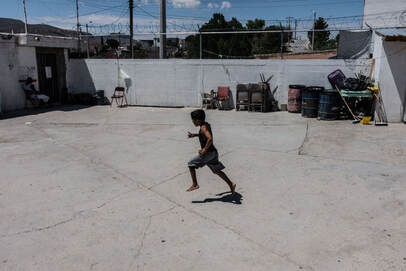
Roberto the coyote can see a stretch of border fence from his ranch in Ciudad Juarez, Mexico, about a mile south of El Paso. Smuggling drugs and people to "el otro lado," the other side, has been his life's work. There's always a way, he says, no matter how hard President Donald Trump tries to stop the flow. But this year's crackdown has made it a tougher proposition. A deadlier one, too-especially for women and children, who are increasingly dying in the attempt. Not much surprises Roberto, who asks not to be identified by his surname because he engages in illegal activity. Sitting on a creaky metal chair, shaded by quince trees and speaking above the din from a gaggle of fighting roosters, the 65-year-old grabs a twig and scratches lines in the sand to show how he stays a step ahead of U.S. and Mexican security forces. Here's a gap in the fence that migrants can dash through - onto land owned by American ranchers in his pay. There's a spot U.S. patrols often... (read more)
DHS expands MPP operations to Eagle Pass.
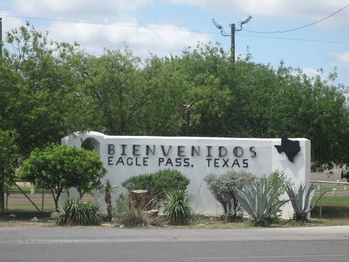
As of Oct. 28, the Department of Homeland Security has begun processing migrants for return to Mexico under the Migrant Protection Protocols (MPP) at the Eagle Pass Port of Entry, in Eagle Pass, Texas. This brings the total number of ports of entry where MPP returns will be made to six. Migrants who attempts to enter the U.S. via the southwest border regardless of location may be returned to Mexico to await their immigration court proceedings. The expansion to Eagle Pass reflects the continued effectiveness and importance of MPP across the southern border. First implemented in January 2019 in accordance with a law passed by Congress in 1996, the program allows certain aliens to remain in Mexico while awaiting court proceedings in the United States. MPP has been a crucial element of DHS's success in addressing the ongoing crisis, securing the border, and ending catch and release. Since the peak of the crisis in May 2019, the number of aliens encountered at and between the ports of entry has decreased by 64% overall - and approximately 80% for Central American families. "The President is using every tool available to address the humanitarian crisis at the border to include... (read more)
Published: October 16, 2019
USA Today Network publishes comprehensive project on immigration following its unprecedented effort to document crisis at U.S.-Mexico border.
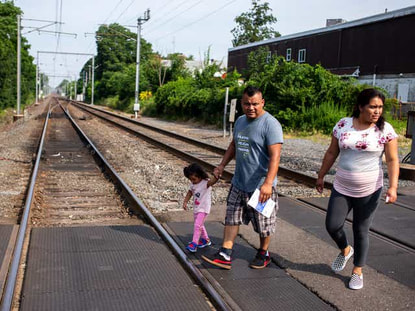
With the country facing a record-breaking surge of immigrants amid a years-long political debate, the USA Today Network launched a comprehensive report revealing the scope of America's immigration challenge. The USA Today Network brings the full strength of its nationwide news coverage to "The Migrants," a special digital and video journey through a week in the life of immigration in America. Nicole Carroll, USA Today's editor-in-chief, said the reporting was as ambitious as it was unprecendented. "The story at times is overwhelming, but so is what is taking place at our border," Carroll said. "As journalists, we say all the time, 'show, don't tell.' Our goal was to transport our readers to scenes of the crisis, not just tell them what happened." With concurrent reporting from four countries, eight states and across the length of the U.S.-Mexico border, "The Migrants" reveals a system on the brink of collapse. It witnesses families facing... (read more)
Desperate migrants on the border: 'I should just swim across.'
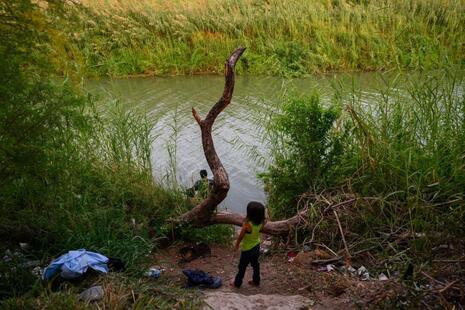
A growing number of migrants, blocked at the border by new immigration policies, are using riskier tactics to get in. Peering out over the Rio Grande, separated from Brownsville, Tex., by only about 100 feet of coursing water, Ana Galeano Valdez talked herself down from a perilous decision - something she has done several times in the weeks she has been living in a tent in one of Mexico's most dangerous cities. "When I'm this close and I can see it, I'm tempted to think I should just swim across again, but for what?" she said on a recent evening, as the sun set over South Texas. Last week, a 26-year-old mother and her toddler drowned crossing the river from Matamoros, Mexico - the second parent and child to die there since June. When Ms. Galeano Valdez, who is six months pregnant, crossed for the first time, water rushed into her raft until it reached her chest. She reached the other side but was delivered back to Mexico by American immigration officials. Thousands of... (read more)
The deadliest crossing.

With no better options amid Trump's border crackdown, migrants are taking their chances with Arizona's perilous Sonoran Desert. Jose felt exhilaration and dread as he trailed the coyote. He had just reached the United States, but in the blacked-out night he had to double-time his footsteps to keep up with his guide, navigating cactus spines that sliced his arms and ankles. They were at the beginning of an 80-mile journey through Arizona's Sonoran Desert, a vast and unrelenting wilderness, and it would take at least a week of hard trekking before they walked out. Shortly after they ducked under the post-and-rail barrier at the border, one of the most desolate stretches of the U.S.'s 2,000-mile southern frontier, the coyote stopped and turned back, promising Jose that another guide would be waiting for him on the far side of the valley ahead. The pair had struck a deal to make the entire journey together, but now Jose walked alone in the darkness. The provisions the coyote had given him were... (read more)
Published: September 24, 2019
Mexico pushes back after top U.S. court favours Trump on shunning migrants.

The Mexican government protested and Central American migrants feared deportation back to their violent homelands on Thursday after the U.S. Supreme Court allowed President Donald Trump to slam the door on asylum-seekers at the U.S.-Mexican border. The court on Wednesday found that Trump's restrictive asylum rule could go into effect nationwide while a lawsuit challenging its underlying legality proceeds, handing the president a victory as he brandishes his anti-immigration credentials for the November 2020 presidential election. The rule requires immigrants who want asylum to first seek safe haven in a third country through which they travel on the way to the United States, enabling the United States to combat a record surge in Central American asylum-seekers. Trump's immigration crackdown has animated his base of supporters while immigrant advocates in the United States fear the court decision will endanger the lives of migrants, many of them fleeing... (read more)
Sidewalk school aims to give migrant kids a sense of stability.

It's back-to-school time on both sides of the U.S.-Mexico border, and in the border town of Matamoros, Mexico, migrant children are attending a different kind of classroom. Volunteers have created a pop-up school on a downtown sidewalk in hopes of giving the kids some sense of stability. "One, two, three, four ..." Tito, an asylum-seeker from Cuba, counts in Spanish in front of a group of children attending the sidewalk school recently. He fled his native Cuba because he feared being persecuted for being gay, and he asked that we not use his last name. Back home he works in finance; here he's leading a math class. "I try to make the situation here a bit better for the kids and for myself," Tito said in Spanish. "It satisfies me." He said he can relate to the kids because they're all asylum-seekers, like him. Tens of thousands of migrant families are waiting in Mexican border towns for their day in U.S. immigration court. Here, in Matamoros near the international bridge, asylum-seekers are camping out and the children play in the small plaza. Another volunteer teacher asks the children if... (read more)
Migrants say they face danger before court in Texas tents.
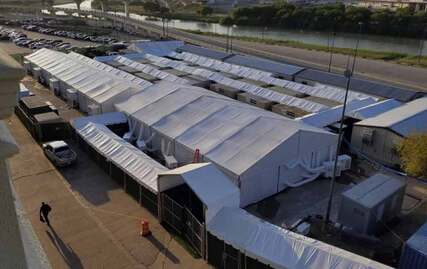
Abel Oset was seized with panic. After an 11-country odyssey that began when he and his namesake son fled Cuba, and included a moment on U.S. soil, he was crossing back into America. But he wasn't sure he'd be able to stay. The two were going to plead their case in a court set up inside a tent in Laredo, Texas, beamed via video conference to a judge in another city - the latest attempt to clear a massive backlog of asylum cases. They were among more than 100 migrants on Tuesday's docket - though only 38 had arrived. So much depended on this hearing; Oset dreaded the very real possibility that he and his 22-year-old son would be sent back over the international bridge, back to Nuevo Laredo, in Tamaulipas, and its cartels and violence. Awaiting his hearing in the pre-dawn hours, Oset lay on the floor of a migration building. He spoke of the criminals who stalk the bridge, picking off migrants. He and his son were targeted by kidnappers twice but had no money and were turned loose with warnings not to return. "Those who arrive are being... (read more)
Published: September 11, 2019
Heat, death and crowded courtrooms: Here's what I saw volunteering at the U.S.-Mexico border.
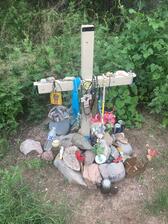
In June, a photo of a Salvadoran father and his 23-month-old daughter that had drowned in the Rio Grande attempting to cross into the United States went viral and became a symbol of the Trump administration's approach to border control. But this situation isn't the creation of one administration. Since 1994, 7,000 deaths have happened at the U.S.-Mexico border. Motivated to help, I traveled to the Southern border to join a humanitarian mission and better understand the conditions migrants face. While we did not come into contact with any migrants, we did come across camouflage clothing in really small sizes that would fit a four or five-year-old and slippers sometimes sold by cartels in towns along the border that migrants use to help cover their tracks and evade detection. We spent a lot of time in the Sonoran desert - really treacherous terrain that migrants have to endure. It's around 115-degrees during the day and you're hiding and trying to get shelter and shade and then... (read more)
No food, no jobs, no future: turned away from the U.S. border, young Hondurans say they are struggling to survive.

Walking through the gym of a local community outreach center in Choloma, Honduras, 25-year-old Josue Betancourt is reminded of brighter days, when he used to be able to come here to work out with friends. "You know, I used to be more buff than him," Betancourt grins, gesturing to one of his closest companions, 19-year-old Cristian Perez. "But, because I'm not really eating right now, I can't really lift weights." Next to Perez-a tall young man with a strapping build-Betancourt's gaunt cheeks and angular frame do stick out. It isn't hard to believe him when he says he sometimes goes days without a meal. "We've both gone even more than two days without eating at times," Betancourt says. "It's hard... but at the same time, it's an experience that helps you gain strength. That's the way I see it." But the kind of strength the 25-year-old is talking about cannot be weighed or measured by any scale. It's built through the kind of hardship that is all too familiar to Betancourt and Perez. For both, trying to... (read more)
LGBTQ migrants face unique dangers when U.S. rejects and returns them to Mexico.
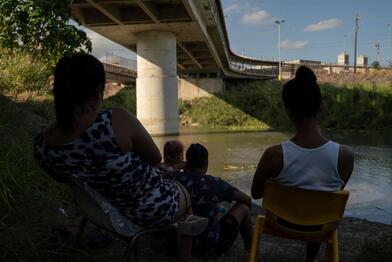
More than thirty thousand asylum seeking migrants have been returned to Mexico to await their day in immigration court -- a process that can take months. This is part of the Trump administration's Remain in Mexico policy. The program says vulnerable populations may be excluded from the program, but many migrants who are considered vulnerable populations, including LGBTQ asylum seekers, are still being sent back to Mexico. In Matamoros, a 25-year-old Salvadoran woman in a black dress with white polka dots sat with a group of women. They met as strangers but over the past few weeks, they grew close. "It was like finding my family outside of my country. It's really beautiful," she said. "They saw that I was sleeping outside on the floor. We share the same blood and the same experiences. If I don't have something they'll give me [some,] and if they don't have something, I'll give them some." The Salvadoran woman is trans. She said she left her home country several years ago because... (read more)
Published: August 21, 2019
Migrant crisis is moving south to Mexican border towns.
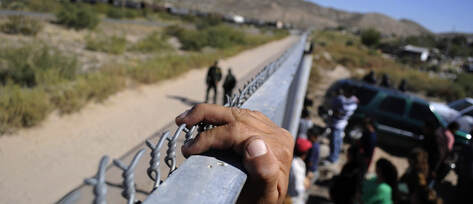
As a consequence of President Trump's remain in Mexico policy, the number of migrants waiting in Mexican border cities is growing. Shelters along the Texas border are reporting a commensurate drop. The humanitarian crisis at the U.S.-Mexico border has moved south. Only three months ago, migrant shelters in the U.S. were packed, and the Border Patrol said the agency was at the breaking point; now migrants are living in squalor in dangerous Mexican border towns. NPR's John Burnett reports. JOHN BURNETT, BYLINE: A month ago, if you came to the sun-blasted plaza in Matamoros, Mexico, at the foot of the International Bridge, it would have been full of asylum-seekers waiting to be let into America. They were haggard, but there was hope in their faces. Today they're still here, lying about dejectedly, seeking shade from the brutal summer heat, and they're gloomy about their fate. BURNETT: "We're just waiting here for our court date, which is two months away, to see if... (read more)
Mexico's crackdown is making the migrant crisis worse.
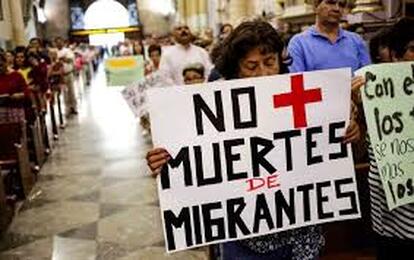
Under pressure from the US to ramp up deterrence, security forces have been implicated in the killing of at least two migrants this year. Amid all the urgent and much-deserved coverage of the family separation policy, the migrant detention centers, and predatory Immigration and Customs Enforcement raids, it has been easy to miss the fact that Mexican security forces aren't treating migrants much better. Partly armed and trained by the United States, Mexico's police and immigration authorities are carrying out a campaign of fear and violence against migrants-with impunity. Just last week, Mexican police shot and killed a Honduran migrant in front of his 8-year-old daughter in the northern Mexican state of Coahuila. The details are still unclear, but the man was shot near a migrant shelter where he was staying with his daughter. And in June a 19-year-old woman was shot and killed after the truck she was in ran through a Mexican police checkpoint. Both shootings came on the heels of the Trump administration's pressuring Mexico to crack down on northward US-bound... (read more)
In migrant crisis, border towns become final destination.

The stranded newcomers are forced to forge a life in border communities. There is a new hint of life in the dilapidated downtown of Ciudad Juárez, Mexico, which residents abandoned as a recession and drug gang murders ravaged the city a decade ago. Thousands of Cubans, waiting in limbo for a decision on their requests for asylum in the United States, have made the crumbling few blocks their home, finding work and renting cheap hotel rooms. The first Cuban restaurant opened in April, when a migrant staff of 10 began serving up the traditional shredded beef dish known as ropa vieja. Banners bear the Cuban flag on the sidewalk outside, signalling how the city's newcomers are starting to forge a life here, even if it still remains difficult, uncertain and temporary. "Everything is a question of luck," said Ramón Santo Domingo Ramos, the restaurant's cook. Border communities like Ciudad Juárez, filled with migrants from Cuba, Central America and elsewhere, are adapting to a new reality: They may be... (read more)
Published: August 7, 2019
More than 900 children were split from parents at border since 2018 court order.
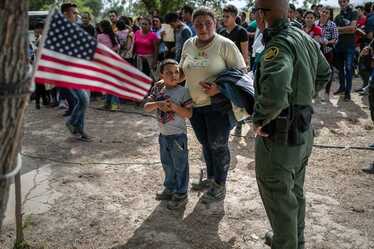
More than 900 children, including babies and toddlers, were separated from their parents at the border in the year after a judge ordered the practice be sharply curtailed, the American Civil Liberties Union said Tuesday in a legal attack that will invite more scrutiny of the Trump administration's widely criticized tactics. The ACLU said the administration is separating families over dubious allegations and minor transgressions including traffic offenses. It asked a judge to rule on whether the 911 separations from June 28, 2018, to June 29 of this year were justified. In June 2018 - days after President Donald Trump retreated amid an international uproar - U.S. District Judge Dana Sabraw ordered that the practice of splitting up families at the border be halted except in limited circumstances, like threats to child safety. The judge left individual... (read more)
U.S. Border Patrol faces new legal challenges, fighting 'losing battle' on migrant holding conditions.
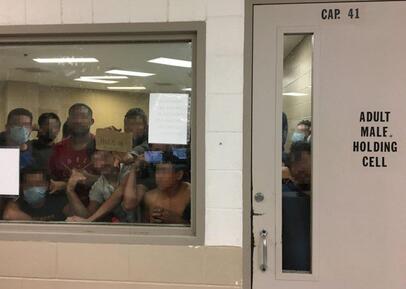
In early June, twin brothers from Guatemala let their sister in California know they were about to cross the U.S.-Mexico border. Then they vanished for almost a month. She couldn't find them in online databases and the local Guatemalan consulate had no information. She feared they had been kidnapped or killed. It took three weeks to locate them: inside jam-packed U.S. Border Patrol cells in South Texas, with no access to phones or lawyers. One of them was inside the fenced-in pens that Vice President Mike Pence visited in July. Only after lawyers sued were both brothers transferred out. It's a pattern that immigration lawyers say has repeated itself for several weeks: Adults are detained in packed Border Patrol cells - malnourished, poorly treated and incommunicado - only to be moved within hours once the government is sued on their behalf. One group of lawyers has filed lawsuits on behalf of the spouses, siblings and relatives of 18 migrants - all of whom were removed from their cells almost immediately. The lawyers believe the government is trying to avoid a federal judge issuing a sweeping order that... (read more)
'They're deporting the wrong people': a family torn apart by border policy.

Leticia Stegall owned a business, paid taxes and had a teenage daughter who was a US citizen, but Ice deported her anyway. Leticia Stegall still runs the Blue Line bar. Drawing up the rotas. Ordering barrels of beer. Encouraging the staff to put the TVs on, the umbrellas out and clear the tables quicker. But now she does it from exile, peering at her laptop and a video stream from cameras dotted between the ice hockey memorabilia lining the bar close to downtown Kansas City. "I still have the income from the bar. I'm not trying to live on 200 pesos ($10) a day. But it's still a nightmare," Stegall said by video call from the Mexican port city of Veracruz, where she currently lives after being deported and leaving her popular city bar - and her family - behind in America. Stegall had long feared the moment that arrived one morning in March 2018 when her car was surrounded by... (read more)
Published: July 25, 2019
A whole generation of migrant kids is languishing at the U.S.-Mexico border.
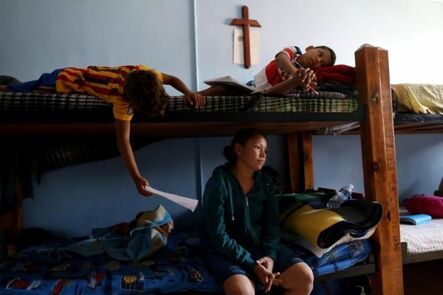
For the two dozen migrant children living inside a small church on the outskirts of Ciudad Juarez, Mexico, most days go like this: Breakfast at 8 a.m., dinner at 6 p.m., and hours of nothing in between. There is no school, and except for a handful of worn Bibles, there are no books. Dangers abound in the surrounding hills, so most haven't left the razor-wire-ringed compound in weeks or even months. "I feel imprisoned," said 16-year-old Alison Mendoza. She left Nicaragua with her parents and two younger sisters in March after her father received death threats for demonstrating against President Daniel Ortega, whose government has jailed and killed thousands of dissenters. The family has been waiting here in Juarez for nearly two months for their chance to request political asylum in the United States. A Trump administration policy allows only a handful of asylum seekers to pass through ports of entry at the U.S. border each day. Mendoza and her sisters, 6-year-old Sol and 11-year-old Michele, are among the... (read more)
When the U.S. puts a border between migrant kids and their caretakers
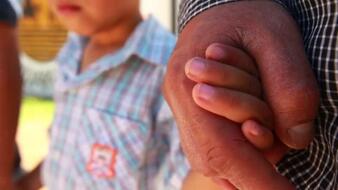
On June 12, Gerardo, a 41-year-old indigenous bricklayer from Guatemala, appeared before a U.S. immigration judge in El Paso, Texas. Since crossing the U.S.-Mexico border illegally two months earlier with his 14-year-old son, he had been separated from the boy and forced to wait in Mexico for his hearing. Now, he had only one question for the judge: "Can you help me get my son back?" After they crossed into the United States, a border patrol agent declared the boy's photocopied birth certificate to be fake, casting doubt on their father-son relationship. Despite Gerardo's protestations in broken Spanish, officers took the boy, Walter, away. Gerardo was sent to Ciudad Juarez, Mexico, to wait out his immigration court proceedings, with no idea where Walter was taken and no instructions on how to find him, according to Gerardo and his attorneys, who recounted the court appearance and circumstances of his case to Reuters. They asked that his surname be withheld because... (read more)
New Texas detention center for migrant children to close.
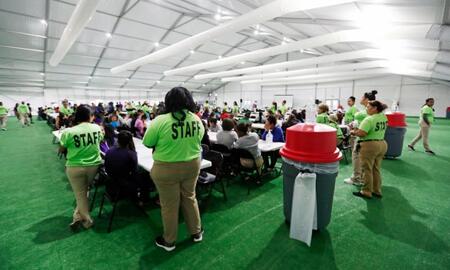
The not-for-profit organization that operates a brand new US government detention facility for migrant youths says the last teenagers detained there will leave by the end of the week - just a few weeks after the center was opened and the media were taken on tours. Kevin Dinnin, the chief executive of contractor BCFS, said on Tuesday that the facility in Carrizo Springs, in rural Texas, close to the US-Mexico border is expected to be empty by Thursday. It is less than two weeks since the Guardian was given a lengthy tour of the center, with the government keen to demonstrate its safe, clean facilities. This was in contrast to appalling conditions for babies, children and adults being detained in border patrol stations after crossing the US-Mexico border unlawfully, which shocked visiting experts so much they went public. At the time of that visit, just under 200 teens between 13 and 17 were held at the... (read more)
Published July 10, 2019
Lawyers say migrant children are living in 'traumatic and dangerous' conditions at border detention site.
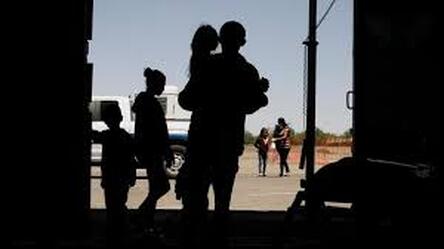
A legal team that recently interviewed over 60 children at a Border Patrol station in Texas says a traumatic and dangerous situation is unfolding for some 250 infants, children and teens locked up for up to 27 days without adequate food, water and sanitation. A team of attorneys who recently visited the facility near El Paso told The Associated Press that three girls, ages 10 to 15, said they had been taking turns keeping watch over a sick 2-year-old boy because there was no one else to look after him. When the lawyers saw the 2-year-old boy, he wasn't wearing a diaper and had wet his pants, and his shirt was smeared in mucus. They said at least 15 children at the facility had the flu, and some were kept in medical quarantine. Children told lawyers that they were fed uncooked frozen food or rice and had gone weeks without ... (read more)
Drownings in West Texas canals are rising as more migrants arrive at the US-Mexico border.
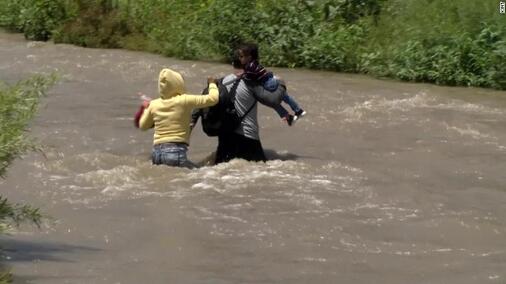
Natividad Quinto Crisóstomo was dreaming of reuniting with her husband in Arkansas when she died in an irrigation canal near the United States-Mexico border fence. The 19-year-old from the Mexican state of Michoacán is among the nearly dozen people who have drowned in El Paso-area canals this month as the region deals with an influx of migrants at the US-Mexico border. Only 11 canal drownings were reported in 2018 alone, said Enrique Aguilar, a spokesperson for the El Paso County Fire Department. The rise of drownings in West Texas canals is another example of the perilous journey migrants take to get to the US. Earlier this week, the image of a Salvadoran father and his 23-month-old daughter who drowned as they were crossing from Mexico into Texas near Brownsville renewed the debate over border policy. On Wednesday, the body of... (read more)
Humanitarian crisis at the US-Mexico border by the numbers.
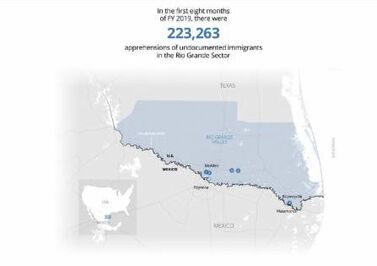
Reports from the news media, lawyers and the federal government itself about conditions in migrant centers along the southern border with Mexico are bleak. U.S. Customs and Border Protection facilities containing thousands of unaccompanied children and adults who crossed into the U.S. without authorization in recent months are woefully overcrowded, substandard and filthy. Many have gone without showers, adequate food and water. The latest report from the U.S. Department of Homeland Security's inspector general, released Tuesday, calls for immediate improvements in five Texas holding facilities, with one primary recommendation: release people faster into the custody of other government agencies capable of handling the situation better. The following is a summary of the key findings of the inspector general's report, which has triggered outrage and demands for improvements by members of Congress and immigrant... (read more)
Published June 19, 2019
Record number of African migrants coming to Mexican border.
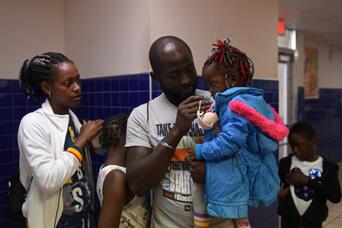
Undaunted by a dangerous journey over thousands of miles, people fleeing economic hardship and human rights abuses in African countries are coming to the U.S.-Mexico border in unprecedented numbers, surprising Border Patrol agents more accustomed to Spanish-speaking migrants. Officials in Texas and even Maine are scrambling to absorb the sharp increase in African migrants. They are coming to America after flying across the Atlantic Ocean to South America and then embarking on an often harrowing overland journey. In one recent week, agents in the Border Patrol's Del Rio sector stopped more than 500 African migrants found walking in separate groups along the arid land after splashing across the Rio Grande, children in tow. That is more than double the total of 211 African migrants who were detained by the Border Patrol along the entire 2,000-mile (3,200-kilometer) U.S.-Mexico border in the 2018 fiscal year. "We are continuing to see a rise in... (read more)
Foreign dignitaries to tour US-Mexico border.

Foreign officials are expected to tour the U.S.-Mexico border south of San Diego Monday under the invitation of the U.S. State Department. Approximately 20 foreign ambassadors to the United States of America will take part in the tour. They are from various countries including Albania, Belarus, Croatia, Hungary, Latvia, Kenya. Lithuania and Uzbekistan. The tour will talk about diplomatic efforts to address global migration and security challenges, according to the U.S. Customs and Border Protection. NBC 7 and Telemundo 20 will provide... (read more)
On the U.S.-Mexico border, crowds of migrants and a 'broken' system.
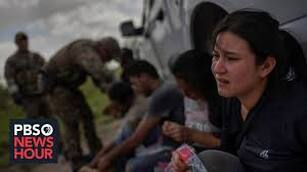
May saw the highest number of crossings at the U.S.-Mexico border since 2007. Due to the surge and a new Trump administration policy that keeps asylum seekers in Mexico until their claims are processed, communities on both sides of the divide are struggling to handle the population influx. Many asylum seekers are families fleeing instability and violence in their countries. Amna Nawaz reports. Two months ago, Emerita fled her home country of Honduras. She shows us these scars as evidence of the abuse she suffered. She fears for her life, she says, because she's gay. She crossed illegally into the U.S., seeking asylum, but, under a Trump administration policy, was sent back to Mexico until her court date. With no money and no support, she sought refuge in this church shelter in Juarez. Her first hearing, later this month, could determine... (read more)
Published June 5, 2019
What Mexico has done to limit the tide of migrants.
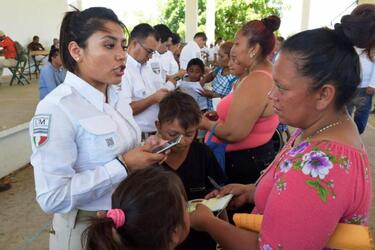
President Donald Trump says he's imposing tariffs on all goods from Mexico until the country stops the flow of undocumented migrants from Central America who cross its territory and enter the United States. Trump tweeted Friday that Mexico "can easily fix this problem. Time for them to finally do what must be done!" Here's a look at what Mexico has done so far: The problem. In the first three months of 2019, as many as 300,000 migrants - mostly from Honduras, Guatemala and El Salvador - crossed through Mexico to reach the United States. Many were families with children, who cannot be detained for long in the United States. How did Mexico's new president look at immigration? Lopez Obrador took office on Dec. 1, intending to reduce migration by addressing its root causes - joblessness, poverty and violence in such countries as... (read more)
Migrant surge accelerates at US-Mexico border.
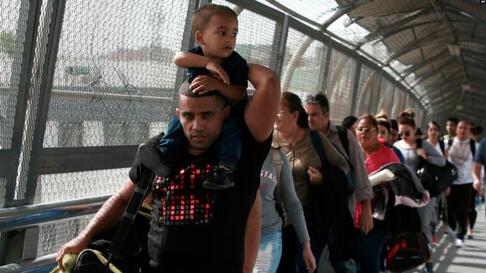
The Trump administration on Thursday said a surge of migrant arrivals at the southern U.S. border continues to accelerate, with more than 300,000 mostly Central American undocumented immigrants apprehended or requesting asylum so far in the current fiscal year, which began last October. "We are in the midst of an ongoing humanitarian and security crisis at the southwest border," acting Department of Homeland Security Secretary Kevin McAleenan told a Senate panel. "Almost 110,000 migrants attempted to cross without legal status last month, the most in over a decade, and over 65% were families and unaccompanied children." At the current pace, 2019's total for migrant arrivals would more than triple the number reported for all of 2018, which was 169,000. Factors in migration. McAleenan said that while gang violence and rampant insecurity in three Central American nations has started to ebb, other factors, such as persistent droughts and... (read more)
The crush of children at Arizona's border shows a U.S. immigration system on the brink.
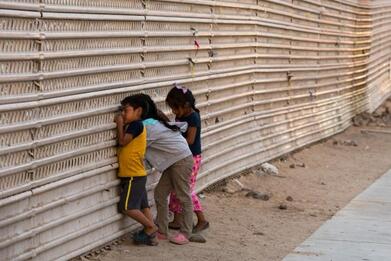
Central American parents and children started pouring into this desert border community faster than anyone had predicted. Out of desperation, the Salvation Army opened a shelter in a strip mall in March, thinking it would be temporary. At first, they had 50 people. Then 150. Then the numbers doubled by the week. Churches issued urgent calls for diapers, baby formula, coloring books and crayons. Aid workers flew in from Washington. The mayor, who opposes illegal immigration, declared an emergency and implored the White House to help because the flow of people coming out of federal detention at the border was unlike anything Yuma had ever seen. "I'm not interested in seeing homeless and hungry families walking around the city looking for resources and all the issues that come with that," Mayor Douglas Nicholls (R) said in a recent interview at City Hall. "It's a big issue." In the Border Patrol's Yuma sector, which stretches from California deep into the Arizona desert, half of the apprehensions this year have been... (read more)
Publiched: May 22, 2019

Administration considers next steps in DNA testing on the border. The Department of Homeland Security is considering next steps in DNA testing on the southern border, following a pilot program that concluded last week. DHS ran the DNA pilot program to help identify and prosecute individuals posing as families in an effort to target human smuggling. The Rapid DNA testing, as it's known, involves a cheek swab and can, on average, provide results in about 90 minutes. "We're continuing to analyze the results of the DNA, analyze where we think it'd be appropriate in the processing line," said Alysa Erichs, acting executive associate director of Immigration and Customs Enforcement's Homeland Security Investigations. ICE has briefed acting DHS Secretary Kevin McAleenan on the DNA testing, Erichs said. Before the DNA pilot program, ICE Homeland Security Investigations personnel had been... (read more)
Waiting for your asylum number to get called.
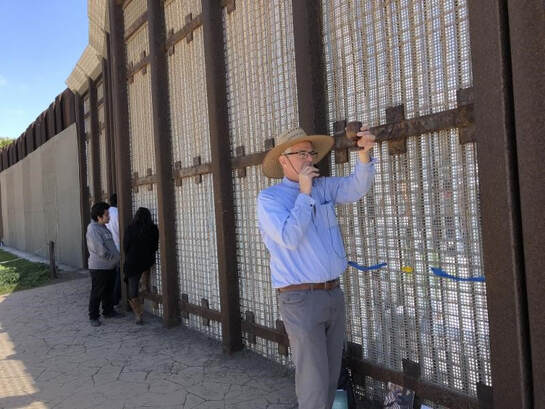
Colonel Ann Wright reports on the life in limbo for people along the southern border who are applying for refuge in the U.S. The U.S.-Mexico border at the Pacific Ocean is composed of two very tall fences, with a no man's land of about 30 feet in between. Sensors and cameras alert U.S Border Patrol guards of any activity on or between the fences. Thousands of people hoping for asylum in the U.S. are waiting for hearings in tents, shelters and detention facilities in cities on both sides of the border. Rev. John, a Methodist pastor, has been working for the past 25 years with immigrants and refugees both in Mexico and in the United States. He said that each U.S. administration has tried to use fences and walls to stem the flow of newcomers. Despite the double fence, people keep coming. Most, Rev. John said, are turning themselves into U.S. Border Patrol rather than enter illegally. While still in Central America, many speak by phone with U.S. friends and relatives and develop leads on work and housing before they leave home. He noted that documenting the violence... (read more)
Guatemalan ghost towns
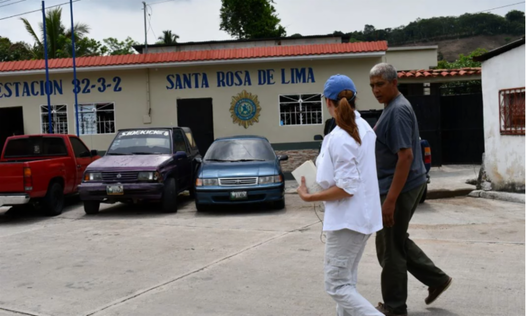
Traffickers tout U.S. asylum laws to lure migrants away from homeland. As President Trump continues to battle what he describes as a do nothing congress for a solution to fix the ongoing border crisis, cartels and human trafficking organizations are taking advantage of the situation. They are using the U.S. laws to perpetuate illegal immigration, promising potential migrants guaranteed access to the U.S. from Guatemala where they say they will find work, as long as they claim asylum. The evidence is ripe. The roads are barren, stores and homes are empty and those left behind say they are living in "with ghosts." The residents of Santa Rosa De Lima, Guatemala spoke to SaraACarter.com on a recent trip to the region. Those remaining in the town, discussed living in poverty, corruption within their government, loss of their community and the hopelessness that drives them from their homeland. They say the human traffickers are recruiting residents daily. These traffickers are instructing the potential migrants on what to say and.. (read more)
Published May 8, 2019
U.S. sending asylum seekers to Mexico while awaiting court ruling, in some cases ignoring own protocols.
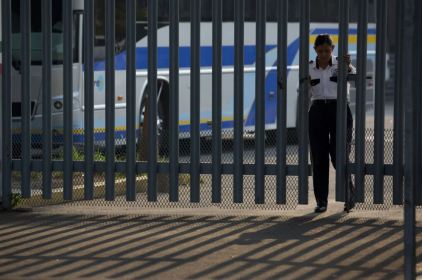
While a federal appeals court weighs the Trump administration's policy of sending asylum seekers back to Mexico to await court hearings in the United States, the government appears to be ignoring its own protocols for who it should send back across the border. The guidelines for the Migrant Protection Protocols program - also known as Remain in Mexico - preclude government officials from sending people with "known physical/mental health issues" back to Mexico. But at least two pregnant women and a Honduran family that includes a 4-year-old girl with a neurological disorder were sent from El Paso to Ciudad Juarez, Mexico, under the MPP program, according to court proceedings in recent weeks. It is difficult for the girl to take in food, she is nonverbal and unable to walk, and her family argues that waiting in Mexico was a dangerous proposition. The girl's mother told Border Patrol agents about her condition, and she said they were unsympathetic: "They told me that if I knew that she... (read more)
Inside Texas' new migrant tent facility.

Giant tent structures have been erected in Texas to serve as short-term detention facilities to process a huge influx of families and unaccompanied minors from Central America arriving at the U.S.-Mexico border. The facilities are open Friday in El Paso, Texas, and in the state's Rio Grande Valley next to the Donna-Rio Bravo International Bridge. Across the southern border, more than 103,000 migrants were taken into custody in March - the biggest monthly total in more than a decade. The Rio Grande Valley is the busiest sector. The Border Patrol reported apprehending more than 30,000 migrants in March in its Rio Grande Valley sector. The white tent structures were built to detain migrants when they are apprehended at the border or turn themselves in to border officials. Migrant families and unaccompanied children are supposed to be detained at the facilities for no longer than 72 hours. But immigration advocates worry migrants won't have access to legal services and... (read more)
Homeland Security plans to pilot DNA testing at the U.S.-Mexico border.
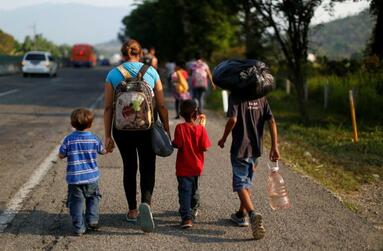
Department of Homeland Security (DHS) officials will soon pilot a DNA testing program at the U.S.-Mexico border in an attempt to catch migrants traveling with children who are not their own. The program is set to start next week at two ports of entry, CNN reports, and will run for two to three days. DHS says it has seen a "staggering increase" in the number of instances of adults traveling with unrelated minors and claiming falsely to be a family unit. Such cases have reportedly risen by 315% from October 2017 to February 2018 and are examples, it claims, of migrants taking advantage of "legal loopholes" that have become a "magnet for illegal immigration." By law, the U.S. government cannot detain migrant children for more than 20 days, resulting in their and their supposed parents' release after crossing the border. The DNA testing program, which department officials told CNN was in response to concerns about... (read more)
Published on April 24, 2019
Image of child crying at border wins World Press Photo award.
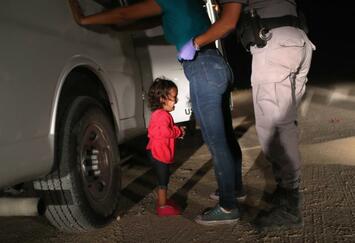
A photograph of a Honduran toddler crying as a U.S. Border Patrol officer pats down the child's mother in Texas was named as the prestigious World Press Photo of the Year at a ceremony Thursday evening. Getty Images photographer John Moore's winning image shows 2-year-old Yanela Sanchez and her mother, Sandra Sanchez, after they were taken into custody last June 12, and it fueled debate about tough Trump administration policies that included separating families detained at the U.S.-Mexico border. Time magazine published Moore's photo on its cover, producing anger over U.S. President Donald Trump's family separation program. But Yanela's father later told the British newspaper Daily Mail that his daughter wasn't removed from her mother and the two were... (read more)

Migrant camps overflow as Mexico cracks down after Trump threats.
Amid pressure from Washington, Mexico is backpedaling on promises of better treatment for Central American migrants, leaving hundreds stranded in unsanitary camps near its southern border and allegations of irregular detentions. Mexican President Andres Manuel Lopez Obrador promised more humane treatment for Central American migrants when he took office in December. His left-leaning government issued thousands of year-long humanitarian visas in January, giving migrants legal access to jobs and the right to travel to the United States. However, caught off guard by a surge in arrivals, Lopez Obrador's administration is resorting to old tactics based on tough law enforcement. Mexico has halted the liberal visa policy and ramped up detentions of migrants heading north, government data shows, following criticism from U.S. President Donald Trump of a jump in the number of Central American asylum seekers reaching the U.S. border in February. Trump, who is expected to make border security central to his 2020 re-election bid, has vowed to limit trade with Mexico if it does not help slow immigration. While Lopez Obrador's... (read more)
Amid pressure from Washington, Mexico is backpedaling on promises of better treatment for Central American migrants, leaving hundreds stranded in unsanitary camps near its southern border and allegations of irregular detentions. Mexican President Andres Manuel Lopez Obrador promised more humane treatment for Central American migrants when he took office in December. His left-leaning government issued thousands of year-long humanitarian visas in January, giving migrants legal access to jobs and the right to travel to the United States. However, caught off guard by a surge in arrivals, Lopez Obrador's administration is resorting to old tactics based on tough law enforcement. Mexico has halted the liberal visa policy and ramped up detentions of migrants heading north, government data shows, following criticism from U.S. President Donald Trump of a jump in the number of Central American asylum seekers reaching the U.S. border in February. Trump, who is expected to make border security central to his 2020 re-election bid, has vowed to limit trade with Mexico if it does not help slow immigration. While Lopez Obrador's... (read more)
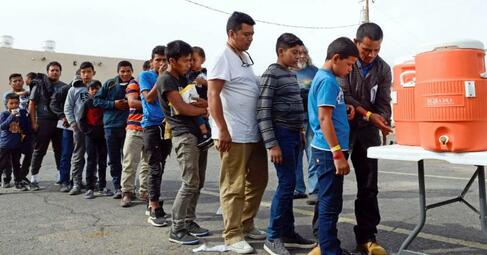
Migrants dropped off in New Mexico; city asks for donations.
Border Patrol agents dropped off asylum-seeking migrants in New Mexico's second most populous city for the second day in a row Saturday, prompting Las Cruces city officials to appeal for donations of food and personal hygiene items and a state medical program to seek volunteers to provide health assessments of migrants. The migrants were being temporarily housed at a homeless shelter in Las Cruces, a city recreation center and a campus of social service agencies, city officials said in a statement. The statement said 83 migrants arrived Saturday, following about 95 who were dropped off by the Border Patrol on Friday at the Gospel Rescue Mission homeless shelter and the Community of Hope campus. The Las Cruces Sun-News reported Las Cruces churches for months have been providing temporary shelter to migrants released from Immigration and Customs Enforcement detention but that Friday was the first time... (read more)
Border Patrol agents dropped off asylum-seeking migrants in New Mexico's second most populous city for the second day in a row Saturday, prompting Las Cruces city officials to appeal for donations of food and personal hygiene items and a state medical program to seek volunteers to provide health assessments of migrants. The migrants were being temporarily housed at a homeless shelter in Las Cruces, a city recreation center and a campus of social service agencies, city officials said in a statement. The statement said 83 migrants arrived Saturday, following about 95 who were dropped off by the Border Patrol on Friday at the Gospel Rescue Mission homeless shelter and the Community of Hope campus. The Las Cruces Sun-News reported Las Cruces churches for months have been providing temporary shelter to migrants released from Immigration and Customs Enforcement detention but that Friday was the first time... (read more)
Published on April 11, 2019
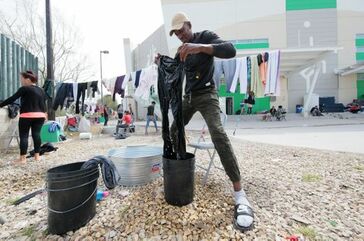
More than 100 immigrants wait in Juárez: 'The only thing we can do is stay' in Mexico. More than 100 Central American immigrants who were in El Paso seeking U.S. asylum have been returned to Mexico to await their hearings. U.S. Rep. Nanette Barragán and a delegation of Democratic Congressional representatives, including Veronica Escobar of El Paso, said about 140 immigrants have been sent back to Juárez from El Paso under the Department of Homeland Security's Migrant Protection Protocols. The policy, commonly known as Remain in Mexico, started in El Paso in mid-March, but it was just last week when dozens of asylum-seekers and their children began returning to shelters in the Mexican city, Juárez Mayor Armando Cabada said at a news conference Wednesday. He said about 80 asylum-seekers had been returned to Juárez by mid-week. Cabada expected the pace to quicken rapidly, and his city was bracing for 100 asylum-seekers a day to be sent to Juárez by next week. "What will we do with them?" he asked. "This is...(read more)

US wants 2 years to ID migrant kids separated from families. The Trump administration wants up to two years to find potentially thousands of children who were separated from their families at the border before a judge halted the practice last year, a task that it says is more laborious than previous efforts because the children are no longer in government custody. The Justice Department said in a court filing late Friday that it will take at least a year to review about 47,000 cases of unaccompanied children taken into government custody between July 1, 2017 and June 25, 2018 - the day before U.S. District Judge Dana Sabraw halted the general practice of splitting families. The administration would begin by sifting through names for traits most likely to signal separation - for example, children under 5. The administration would provide information on separated families on a rolling basis to the American Civil Liberties Union, which sued to reunite families and criticized the proposed timeline on Saturday. The administration would provide information on separated families on a rolling basis to... (read more)

Waiting for asylum in the United States, migrants live in fear in Mexico. Hoping to convince American immigration officials that his life is in danger, Selvin Alvarado sorted through photographs of men who he said have threatened to kill him. Mr. Alvarado said he fled Honduras last fall after exposing corruption in his hometown and was followed into Mexico by an armed group. Once he reached the United States, he believed he would be safe - even if that meant being detained while waiting for asylum. "I prefer 1,000 times being jailed," he said last week at a shelter south of the United States border, "than being dead." Instead, as part of a newly expanded Trump administration policy, Mr. Alvarado, 29, a father of two, was sent back to Mexico. He has been waiting for weeks to be summoned for an asylum hearing in California. Hundreds of asylum seekers are expected to be blocked from waiting in the United States each day under the so-called Remain in Mexico policy, which American officials describe as a... (read more)
Published on March 27, 2019
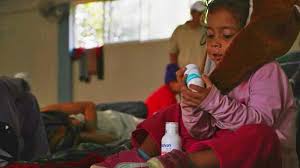
Walk in their shoes. People & Power follows two migrant caravans as they head through Mexico to the US border. For well over a year, large groups of Central American migrants, travelling together for safety in "caravans", have been fleeing from persecution, poverty and violence in their home countries of Honduras, Guatemala, and El Salvador. Covering thousands of kilometres through Mexico, they've been heading to the US border in the hopes of getting across and gaining asylum - despite the many dangers and privations en route and warnings by US officials that anyone found entering the country illegally would face arrest, prosecution and deportation. The largest traveling group, with over 7,000 people, got under way in October 2018, attracting enormous media attention and a furious response from American President Donald Trump, who labelled the caravan an invasion, dispatched troops to the border, reaffirmed his election pledge to build a "wall" on the border to keep migrants out, then announced... (read more)

Controversial Trump administration protocol for asylum seekers will begin in El Paso. The Trump administration this week will begin implementing its "Migrant Protection Protocols" in El Paso, requiring some migrants to return to neighboring Ciudad Juárez, Mexico, while their asylum claims are processed in U.S. immigration courts. That controversial program has been underway since January 2019 in California, but this will mark its first use in Texas, according to multiple sources who spoke to Texas Monthly on the condition that they not be identified because they weren't authorized to speak publicly about the plans. The American Civil Liberties Union and other groups have filed a lawsuit in San Francisco challenging the legality of the plan to have asylum seekers wait in Mexico while their cases are heard in U.S. immigration courts. A hearing is scheduled on Friday on a request for... (read more)
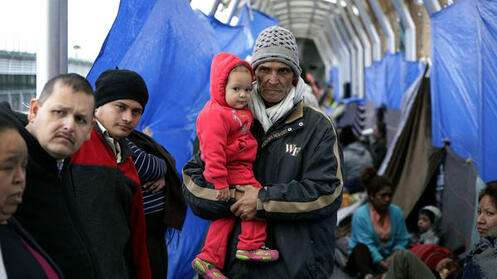
With thousands of migrants crossing the border daily, we asked 'why now?'Irsi Castillo clutches her 3-year-old daughter to her chest to shield her from the wind. They've just crossed the Rio Grande and stepped onto U.S. soil in El Paso, Texas, after traveling from Honduras. Thousands of migrants like Castillo are crossing the border every day and turning themselves in to the Border Patrol. They're fleeing poverty and violence in Central America. At the current pace, Homeland Security Secretary Kirstjen Nielsen says, almost 100,000 migrants will cross the border this month - far exceeding last month's total. Nielsen traveled to Texas on Thursday and talked with local sheriffs about what she's calling a "catastrophe" at the Southern border. "Our laws aren't keeping up with the migrant flows," Nielsen said earlier this week in Washington. "And until they are fixed, the situation will only get worse and more heartbreaking." And that's at the heart of the current immigration debate. One side says these migrants deserve the chance to apply for asylum, while the other says... (read more)
order
order
Published on March 13, 2019
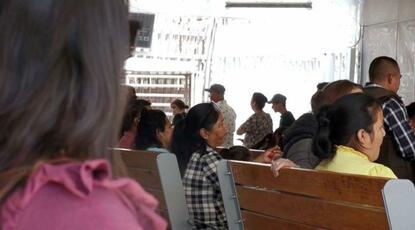
24 deported parents that returned to border hoping to be reunited with their children have been detained. This story is a part of an ongoing ABC News project called Borderline, documenting immigration at the U.S.-Mexico border.Twenty-four migrant parents who returned to the United States on Saturday after they said they were separated and deported without their children are now being detained by the U.S. government, according to Erika Pinheiro, a lawyer for the families and the litigation and policy director of Al Otro Lado. Of the 24 detained, 19 are being held by U.S. Customs and Border Protection (CBP) and five by U.S. Immigration and Customs Enforcement (ICE), said Pinheiro. The lawyers for the group of parents, who together made the journey back to the U.S. to reunite with their children and seek asylum, said the government agencies placed them in different detention centers, even splitting some families apart who had arrived at the border together. (read more)
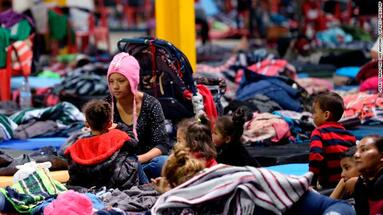
What happened to the migrant caravans? Nearly a year after migrant caravans captured the nation's attention and drew the ire of President Donald Trump, they appear to have fizzled out, marking yet another shift in their ever-evolving immigration policy narrative. Caravans, as they've largely become known, have deviated from their original purpose -- from a way to highlight the plight of migrants, and in some cases, search for loved ones who never made it to the US -- to another, seemingly safer, form of travel to the southern border. But now, migrants are splintering off into a number of groups, instead of journeying north in one large caravan. A Department of Homeland Security official told CNN that there are currently more than 10,000 undocumented migrants making their way to the US-Mexico border, but they do not appear to be traveling in caravans. Instead, the groups are... (read more)

4 reasons the number of families crossing the US-Mexico border illegally is soaring, and how Trump may have made the problem worse. After years of steady declines, the number of migrants apprehended crossing the US border illegally has begun to soar, posing new challenges for President Donald Trump's immigration strategy and adding fuel to his argument that the border is in a "crisis." Trump has cracked down on asylum seekers, attempted an ill-fated "zero tolerance" policy, and tried to block multiple caravans of migrants from entering the US, but the number of families illegally crossing the border keeps climbing. The number of apprehensions in February climbed so high that it barely fit on the chart that US Customs and Border Protection updates each month. A confluence of factors have led to the sharp spike in Central American families turning up at the US-Mexico border, exhausted and often ill after... (read more)
Published on February 28, 2019
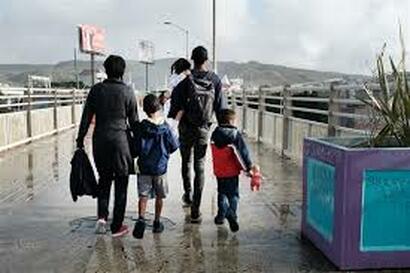
Tijuana struggles to accommodate migrant families as U.S. begins sending them back. After four months at Mexico's southern border, Maria Velasquez Castro, her husband and 5-year-old daughter finally made their move. They had fled violence and poverty in Honduras, traveling through Mexico in a caravan, hoping to seek asylum in the United States. Most of the group they had traveled with decided to go to the Texas border, but Velasquez Castro and her family followed in the footsteps of larger caravans that came before. They ended up in Tijuana, across the border from San Diego. Now, she's filled with remorse. "We had traveled with two friends, but they went through Piedras Negras and they're already across the border," she said. Velasquez Castro described her experience with a tone of despair, as children played soccer in the small courtyard of the Madre Assunta migrant shelter, where she's staying with her daughter. "Many people had told us to go through there (Texas), but they would also say things that would scare us, that it was too dangerous, that they could... (read more)
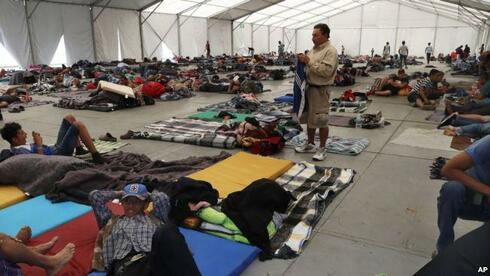
Migrants wait, hope in Mexican border towns. Migrants seeking to enter the United States continue to arrive in Tijuana and other Mexican cities along the U.S. border. Some migrants are traveling in large groups with thousands of people. Others come in groups of just 10 or 12 people. Many walk for days through Central America, then ride buses or trucks for the long trip through the Mexican countryside. In border cities like Tijuana, they find help in shelters operated by aid groups. Angela Escalante is an asylum seeker waiting in Tijuana. She is there with her husband and 7-year-old son. "The situation is very bad, there are no jobs," she said of her country of Nicaragua, blaming its political violence on the country's president, Daniel Ortega. "There's no security so you can't safely walk the streets," she added. New arrivals along the border say they also face violence from organized crime and local drug gangs. Jorge Alejandro Valencia is a 19 year old from western Mexico. He told VOA that, around 14 years ago, criminals... (read more)
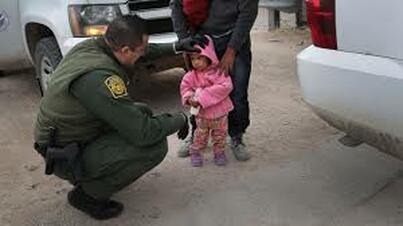
Despite ban, separating migrant families at the border continues in some cases. The Trump administration has been blocked from systematically breaking up migrant families, but hundreds of children crossing the border continue to be separated from their parents in a process requiring none of the oversight used to remove children in the United States from their homes, according to a USA TODAY review of the system. Separating a child from a family in most communities requires a child welfare specialist and involvement of the judicial system, often with a judge scrutinizing the case for months or even years. At the border, the decision is made solely by U.S. Customs and Border Protection agents in the field. No child welfare specialist is required, and no judge is involved in a decision that cannot be appealed. Rebekah Fletcher, a supervising attorney at Kids in Need of Defense, a group that provides lawyers to migrant children in U.S. courts, says the removal of a child from a family in the U.S. is, by design, a difficult, multi-layered process involving people from... (read more)

Migrant shelter 'saturated' by influx of Mexican asylum-seekers. Municipal police parked two vans at the side of the migrant shelter on Tuesday night, dropped off a group of men and guided them into a small chapel that already overflowed with other migrant families seeking refuge from the cold. The adjacent dining room was prepared for dinner, though the folding tables and chairs would later be put away to make room on the floor for sets of blankets that would serve as beds for hundreds of migrants. One of the principal and longest-operating migrant shelters in Nogales, Sonora, the Albergue San Juan Bosco has tripled its number of guests over the past three months, housing an average of 360 men, women and children per night, according to Francisco Loureiro, who operates the facility along with his wife Gilda. "The flow has increased dramatically. Normally, we receive about 100 to 120 migrants per day," Loureiro said. "The shelter is saturated right now. It's completely full." However, according to Loureiro, the recent increase isn't a result of large groups of Central American asylum-seekers arriving in Nogales as they have in other Mexican border cities such as Tijuana, which borders San Diego, or Piedras Negras, across the Rio Grande from Eagle Pass, Texas. Instead... (read more)
Published on February 13, 2019

Nearly 2,000 migrants arrive at Texas-Mexico border, prompting 500 state troopers to respond. A caravan of almost 2,000 Central American migrants has arrived just outside the Texas-Mexico border with the hopes of crossing into the United States, according to officials. Authorities say the migrants arrived Monday in Piedras Negras, across the Rio Grande from Eagle Pass in Maverick County, Texas. There to meet the influx of migrants was a surge in law enforcement that included multiple sheriff's offices, the U.S. Border Patrol and the Texas Department of Public Safety. "If anyone tries to cross the border illegally, they'll be arrested," Maverick County Sheriff Tom Schmerber said. Schmerber said about 500 Texas state troopers had arrived in Maverick County by Tuesday along with 50 reserve deputies from across the state. "We feel very comfortable that police from other counties are ready to respond," Schmerber said. Including the U.S. Border Patrol and personnel from surrounding county sheriff's offices, Schmerber said two SWAT teams also are on standby to maintain order. "When I went to Mexico this morning, the mayor of Piedras Negras was... (read more)
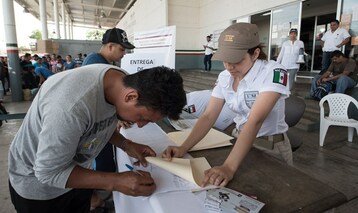
12,000 migrants in two weeks: How Mexico is opening its borders. When the first major caravan of migrants from Central America - mostly Hondurans - arrived at Mexico's southern border in October 2018, they were met by riot police, sent by then-President Enrique Peña Nieto. But when thousands more migrants who were part of a different caravan lined up on the Guatemalan side of Mexico's southern limit in mid-January, they got a very different welcome: expedited humanitarian visas issued in a matter of days instead of several months, giving them the right to travel and work legally in Mexico. That shift is the outcome of what was among the first policy moves of Mexico's recently installed President Andrés Manuel López Obrador - widely known by his initials, AMLO - who took office in December. For the past four years, the country effectively did the U.S. government's dirty work by stepping up the deportation of unauthorized migrants in Mexico. Now... (read more)
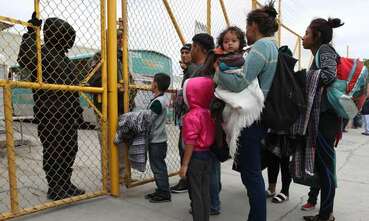
Mexico border towns overwhelmed as Trump policy leaves migrants in limbo. Caravans receive rough welcomes at towns like Piedras Negras where locals are suspicious and officials struggle to house 1,700 newcomers. Rows of federal police in riot gear faced the former factory in the Mexican borderlands, as soldiers watched on from the gun turrets on a pair of Humvees. But the armed men weren't preparing for an operation in the country's bloody drug wars: they were guarding a group of 1,700 Central American migrants who were hoping to reach the US. "If they were protecting us, they'd be facing the other way round," said Alex Torres, 20, as he gripped the chain-like fence around the factory. He spoke in perfect English, having been taken to the US at the age of four, and his plan was to return to his family in Indiana after being deported to Honduras last year. "Imagine being deported to a war zone," he said. Migrants - from Central America and beyond - are increasingly seeking safety in numbers as they make the dangerous passage through Mexico. But the caravans are receiving somewhat rough receptions at... (read more)
Published on January 30, 2019.

A temporary migrant shelter in far eastern Tijuana closed Tuesday. The shelter, known as El Barretal, opened in late November 2018 to provide members of the Central American caravan a place to live when conditions in a shelter closer to the U.S. Mexico border became overcrowded and miserable because of heavy rain. Leonardo Neri, a federal volunteer and the shelter's coordinator, said the closure of the site has been planned for weeks. Government officials have been assisting the last remaining residents find more permanent housing solutions within Tijuana, he said. "At the beginning of December, there were more than 3,000 people from the Central American caravan in this place," said Neri. He emphasized that local, state and federal officials have been working to place the migrants in more permanent shelters or assist them with finding other living arrangements. There were about 100 people - fewer than 10 of them children - living there as of Friday, according to a shelter volunteer. In November... (read more)

County building downtown to house asylum-seeking migrants. A vacant county building in Bankers Hill will become temporary housing for asylum seekers following a San Diego County Board of Supervisors vote Tuesday to lease the building for $1 to an immigration support group. The board voted 4-1 to approve a proposal to lease a former county courthouse on Sixth Avenue to the San Diego Rapid Response Network (SDRRN), who will use the facility to provide shelter, food and services to up to 200 asylum-seeking migrants a day. Supervisors Kristen Gaspar, Dianne Jacob and Jim Desmond all expressed concerns that while the lease would come at no cost to San Diego County, the municipality has been tasked with providing health services to migrants. The California State Assembly Budget Committee on Tuesday did recommend to the full legislature to provide $5 million in state funding toward a San Diego region migrant shelter, according to... (read more)
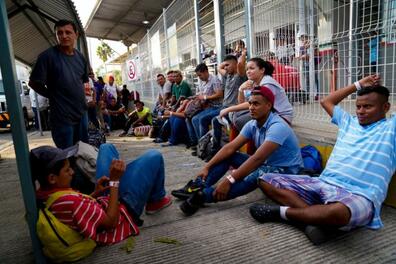
The migrant caravan, redux. Last week, reporter Sandra Dibble and photojournalist Nelvin C. Cepeda reported from the border between Guatemala and Mexico as a new caravan of migrants headed north from Central America. We asked them about what makes this caravan different, where the migrants are headed and whether the debate over President Donald Trump's border wall is impacting the migrants' decisions. Below are photographs from their trip and highlights from the conversation with Mark Platte, the enterprise and immigration editor for The San Diego Union-Tribune. You can also hear the full interview here: You flew to Tapachula and crossed over into Guatemala. What were you hoping to find when you went down there? SANDRA: We went down because there was a new caravan coming up from Honduras. And the Mexican government, under President Andrés Manuel López Obrador had said: "We... (read more)
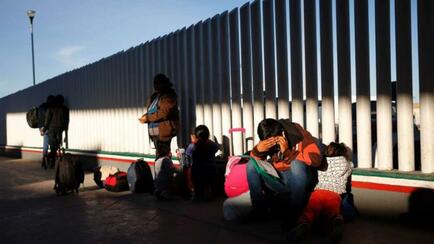
In break with past policy, US tells first asylum seeker to wait in Mexico. The U.S. has turned back its first asylum seeker from the southern border, as part of the Trump administration's new policy requiring people to wait in Mexico for their cases to work their way through immigration courts, the Department of Homeland Security said Tuesday. Agency spokeswoman Katie Waldman said the person seeking asylum was turned back to Tijuana at the San Ysidro port of entry in San Diego. The move was a break with longstanding U.S. policy that allows migrants to wait inside the U.S. as their case winds through the immigration courts, a process that can take months or years. Immigration advocates have vowed to challenge the policy in court. "We can't pretend to send people into danger and pretend we don't have any responsibility," said Judy Rabinovitz, deputy director of the immigrants' rights project at the American Civil Liberties Union, adding that... (read more)

There is a crisis at the border. It's just not what Trump says it is. As Congress debates border security, the issues that led to the death of two children in December are in danger of fading into the background. Congress has three weeks - the deadline until President Donald Trump has threatened to shut down the government again, declare a national emergency, or both - to come to a deal on border security. But if they're letting Trump set the terms of the debate, they risk missing the crisis on the US-Mexico border. Make no mistake - there is a border crisis. The US is seeing something genuinely unprecedented: large numbers of children and families, often in large groups, crossing the border without papers to turn themselves in to US authorities. The immigration enforcement system, not particularly well-equipped to handle vulnerable migrants without papers at all, is cracking under the strain. The gap between... (read more)
Published on January 9, 2019.
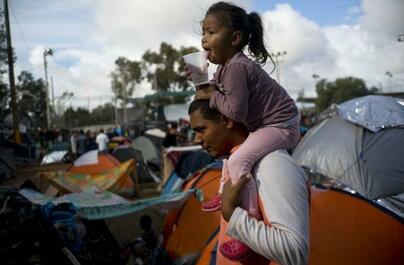
The BBP has been publishing information related to the humanitarian crisis in the Borderlands. Official sources in the Mexican government inform us that the original number of migrants arriving in Baja California included 8,269 people, Today, approximately 1,773 migrants from Central America are still in Tijuana; 668 of them are living at the El Barretal temporary shelter. All migrants have received a work permit from the Mexican government and are legally in the country while they await for their turn to request asylum in the United States. The local business, religious, nonprofit, and philanthropic sectors are mobilizing to improve the situation, yet more help is needed. In the next article, we are highlighting how you and your organization may provide assistance with financial contributions, in-kind gifts and supplies, and volunteer opportunities. For more information contact [email protected]. (Date 1/9/208)

International humanitarian donations into Mexico. For humanitarian donations to be sent to Mexico, the Mexican Consulate in San Diego advises the following procedures and rules. There are three different methods to bring donations into Mexico: Franchise: A Mexican national residing in the border region, may bring merchandise with a value that does not exceed US$150 per person, cumulative up to US$400 dollars, when it is transported by more than two people in the same vehicle. An international passenger residing in the USA may enter merchandise with a value that does not exceed US$300 per person. Import: If the merchandise exceeds the amount indicated before, and does not exceed the equivalent of US$3,000.00, it must be imported through the "self-declaration" area of the Tax Administration Service (SAT). The tax corresponding to the global rate of 16% must be paid for the surplus of its franchise. Through an authorized non-profit organization: For any merchandise that exceeds the previous amount and must be transported in a truck, the process must be done through a non-profit organization authorized by the SAT, such as the Red Cross; they must get a previous authorization from the SAT. For this purpose, you must send a full list of donations collected to the email address:[email protected]. The authorization may take 1 to 2 weeks. Download full brochure.
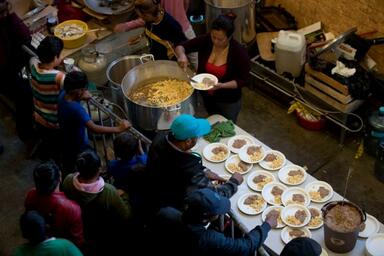
While Washington focuses on the wall, Mexico fears its own border crisis. As President Trump battles with Congress over a giant wall to block immigrants, a lesser-known policy could soon take effect that might have a far deeper impact along the U.S.-Mexican border. In a major change, the Trump administration plans to start requiring migrants to remain in Mexico while their asylum cases crawl through American courts, a process that is likely to take months or years. Border cities like Tijuana could become, in effect, giant waiting rooms for the U.S. immigration system. Mexico is not prepared to provide housing and other services for what could be thousands of migrants, according to officials and migrant advocates. "Disaster is the only word that comes to me," said Pat Murphy, a Catholic priest who runs Casa del Migrante, a large shelter in Tijuana. "We are already living in such a tenuous situation now." Officials in other border cities express similar concerns. A major shelter in Ciudad Juárez, also called Casa del Migrante, announced this week that it did not have enough resources to accept any more newcomers. Some federal officials are also worried. After Mexico's Foreign Ministry announced last week that... (read more)
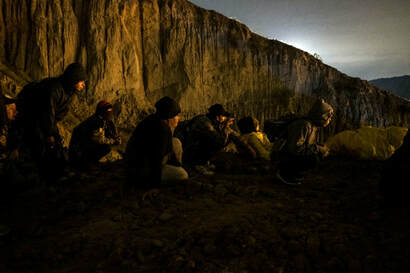
Deaths highlight children's plight in migrant surge to US. The death of two Guatemalan children in the United States within weeks of each other has highlighted why there are so many children among Central American migrants heading north: smugglers tell them families have a better chance of being allowed in by US border guards, witnesses told AFP. Agustin Gomez was one such migrant who decided to risk the trip. Gomez's relatives in his western, mainly indigenous municipality of Nenton near the Mexican border said he had heard rumors that bringing along his eight-year-old son Felipe might ease his way. Felipe died in a New Mexico hospital on Christmas Day, only a week after they were both detained by Texas border guards after crossing the border illegally. US authorities investigating the case say Felipe died after presenting with flu symptoms. Just two weeks earlier, Guatemala had been rocked by the death of seven-year-old indigenous girl Jakelin Caal, admitted to hospital suffering from dehydration. She made the journey alongside her 29-year-old father Nery from the Mayan town of Raxruha in northern Guatemala. Though the surge of Guatemalan migrants to the US-Mexico border is caused largely by... (read more)
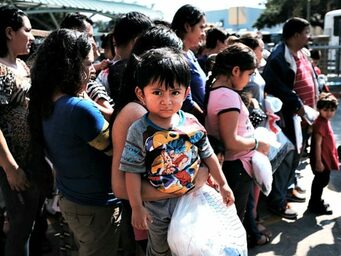
DHS releases over 2k border-crossing adults, children into U.S. The Department of Homeland Security (DHS) is releasing from custody more than 2,000 border-crossing adults and the children they arrived with over the course of a few weeks. A DHS official confirmed to Breitbart News that the U.S. Border Patrol and the Immigration and Customs Enforcement (ICE) agency is releasing more than 2,000 family units caught at the U.S.-Mexico border, citing a lack of detention space. The border-crossing adults and the children that arrived at the border will be released and given a court date for an immigration hearing. The adults will be given ankle monitors, though the DHS official says the process of keeping track of border-crossers via ankle monitors is not effective. Border Patrol and ICE are experiencing major issues with detention space at the Yuma, Arizona sector of the border, as well as in San Diego, California, El Paso, Texas, and the Rio Grande Valley sector of the southern border. The DHS official said there is not nearly enough bed space for family units at border detention facilities, while Border Patrol encounters about 2,100... (read more)
Published on 12.12.2018
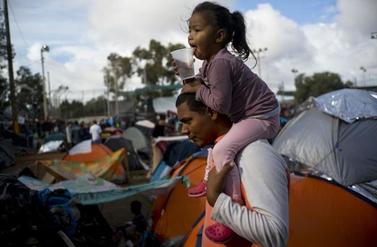
Two weeks ago we published information related to the humanitarian crisis in the Borderlands. Last week our staff visited two migrant camps in Tijuana to support communication and translation efforts of media outlets and funder organizations. Official sources in the Mexican government inform us that the original number of migrants arriving in Baja California included 8,269 people, and has now increased by approximately 2,000 more Central Americans. Official counts show that 2,500 people are now living in the El Barretal shelter. Approximately 1,100 Central Americans are believed to have crossed into the United States. An additional 1,100 Central Americans have opted to return to their country of origin. 2,500 migrants have officially requested visitor cards to remain in Mexico, and 600 requests have been granted. It is believed that the number of total visitor cards granted will total 2,000 by the end of this week. The Mexican Federal Government has assumed operational control of this crisis in Baja California under the direction of the Office of Civil Protection and in collaboration with the Interior Ministry and the Mexican Commission for Refugee Aid. The temporary migrant camps are also being assisted by the National Commission on Human Rights, the United Nations, and other civil society organizations to ensure the safety and security and overall well-being of the Central American migrants. The United States Government is receiving between 30-70 asylum requests each day in the San Ysidro Port of Entry. Since this crisis began, the number of individuals waiting for their asylum case to be reviewed has increased from 2,800 to over 5,200 today.
The local business, religious, nonprofit, and philanthropic sectors are mobilizing to improve the situation, yet more help is needed. In the next article, we are highlighting how you and your organization may provide assistance with financial contributions, in-kind gifts and supplies, and volunteer opportunities. For more information contact [email protected].
The local business, religious, nonprofit, and philanthropic sectors are mobilizing to improve the situation, yet more help is needed. In the next article, we are highlighting how you and your organization may provide assistance with financial contributions, in-kind gifts and supplies, and volunteer opportunities. For more information contact [email protected].
Donations, In-kind gifts and supplies, and volunteer opportunities
There are many organizations responding to the call to action in support of the humanitarian crisis in San Diego, Tijuana, and Mexicali. Please consider how you and your organization may assist.
Donations: International Community Foundation, El Paso Community Foundation, Hispanics in Philanthropy, and San Diego Rapid Response Network are accepting donations.
In-kind gifts and supplies: The City of Tijuana and several religious and nonprofit organizations providing direct services (food, shelter, clothing, medical attention) have created a list of items needed. Click here for list.
Volunteer opportunities: Many religious groups, nonprofit organizations, and government agencies have responded to the call and welcome volunteer support. Contact [email protected] for more information.
There are many organizations responding to the call to action in support of the humanitarian crisis in San Diego, Tijuana, and Mexicali. Please consider how you and your organization may assist.
Donations: International Community Foundation, El Paso Community Foundation, Hispanics in Philanthropy, and San Diego Rapid Response Network are accepting donations.
In-kind gifts and supplies: The City of Tijuana and several religious and nonprofit organizations providing direct services (food, shelter, clothing, medical attention) have created a list of items needed. Click here for list.
Volunteer opportunities: Many religious groups, nonprofit organizations, and government agencies have responded to the call and welcome volunteer support. Contact [email protected] for more information.

International humanitarian donations into Mexico. For humanitarian donations to be sent to Mexico, the Mexican Consulate in San Diego advises the following procedures and rules. There are three different methods to bring donations into Mexico: Franchise: A Mexican national residing in the border region, may bring merchandise with a value that does not exceed US$150 per person, cumulative up to US$400 dollars, when it is transported by more than two people in the same vehicle. An international passenger residing in the USA may enter merchandise with a value that does not exceed US$300 per person. Import: If the merchandise exceeds the amount indicated before, and does not exceed the equivalent of US$3,000.00, it must be imported through the "self-declaration" area of the Tax Administration Service (SAT). The tax corresponding to the global rate of 16% must be paid for the surplus of its franchise. Through an authorized non-profit organization: For any merchandise that exceeds the previous amount and must be transported in a truck, the process must be done through a non-profit organization authorized by the SAT, such as the Red Cross; they must get a previous authorization from the SAT. For this purpose, you must send a full list of donations collected to the email address:[email protected]. The authorization may take 1 to 2 weeks. Download full brochure.
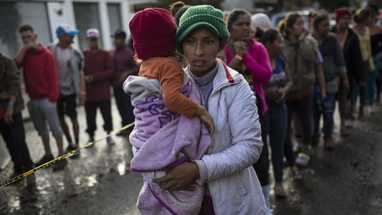
From posting bail to legal aid: NGOs go into overdrive at border. Rights groups ramp up efforts to aid migrants, refugees as they face new hurdles due to Trump's 'zero-tolerance' policy. Victor* first came to the United States in 2006. He left his village in the mountains of Peru during the country's civil war in the 1990s after his family's cow was stolen at gunpoint. As a farmer, his family's entire livelihood relied on that cow and the loss of it forced Victor to flee. First to the capital Lima, and later to Mexico. He eventually crossed the border into the US, where he worked his way up to being a restaurant manager, and then got a job for a construction company. But in January, Victor's mother became gravely ill and he left the US to take care of her in Peru. When she recovered, Victor made his way back to the US border, but things had changed significantly since he last crossed more than five years earlier. The border was better fortified and Border Patrol agents seemed more abundant. When he arrived at the border with the smugglers he paid to take him across, border agents could be seen in the distance. "It was a tense situation," Victor recalled. The smugglers told him to go anyway. Moments later, he was apprehended and detained. A judge set a bail at... (read more)

What is asylum? Who is eligible? Why do recent changes matter? Thousands of migrants traveling together to flee dire circumstances in their native Central American nations are camped in towns and cities edging the U.S.-Mexico border. Many hold out hopes that despite intense political pushback, they'll be given a chance to apply in the U.S. for the humanitarian immigration status known as asylum. Many of the people in the migrant caravan traversed hundreds of miles, often on foot, to reportedly escape extreme poverty and targeted violence in their native countries - especially El Salvador, Guatemala and Honduras. These people are representative of the increase in asylum-seekers coming to the U.S. in recent years. According to a report from the United Nations High Commissioner for Refugees, the U.S. received 262,000 asylum applications in 2016 - double the number in 2014 - with almost half of the applications coming from... (read more) .
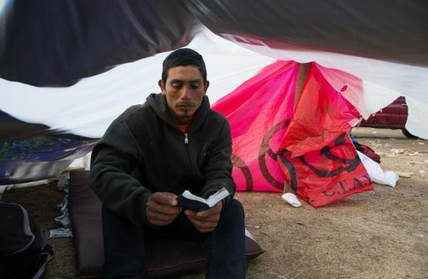
Where the border ends. A border only becomes real when someone tries to cross it. On Sunday, November 25, a few hundred Central Americans marched in peaceful protest on the divide between the United States and Mexico, at the San Ysidro Port of Entry in Tijuana. They were marching to demand recognition as asylum seekers at the mercy of Donald Trump's crackdown on the number of people processed through the port, and to draw attention to the abysmal living conditions at the border, where a rundown sports complex served as a shelter for thousands. A few threw rocks; some tried to cross together en masse; some were diaper-clad and carried by their mothers. Border Patrol responded by firing canisters of tear gas at them. Americans have been hearing about members of "the migrant caravan" since early October, when a group of around 160 Hondurans gathered in San Pedro Sula, one of the world's most violent cities, to begin a nearly 3,000-mile journey to Tijuana on foot. Within several days, the caravan had swelled to... (read more)

Knocking on America's door: An ongoing photo chronicle of the migrant caravan. By San Diego Union-Tribune staff. Less than 20 miles from downtown San Diego, thousands of migrants from Central America are camped out along the U.S.-Mexico border, hoping to seek asylum in the United States. In the weeks since their arrival, there have been flashpoints such as a clash with authorities and a temporary border shutdown. A shelter housing them is overcrowded, causing anxiety over hundreds or thousands more migrants on the way. Photographers from The San Diego Union-Tribune are following along, from the beaches of Playas de Tijuana, where migrants scaled the fences, to the overflowing Benito Juárez shelter. This is a selection of their work.

In recent days the number of migrants walking Northward from Central America and Southern Mexico to Baja California currently totals 8,269 people. There are 5,851 Central Americans that arrived in Tijuana and 2,243 in Mexicali. In Tijuana the total breaks down as follows: 3,754 men, 1,074 women, and 1,023 children. The Central Americans are fleeing violence, persecution, and extreme poverty, and are seeking asylum in the United States of America. In order to seek asylum, International and American law stipulates they must be in the country in order to request it. The US government however, has put significant security measures in place that is keeping the migrant community in Mexico, and is processing approximately 100 cases a day. Three migrant camps have been established in the city of Tijuana, yet the city does not have adequate financial resources nor social service programs to handle the influx of Central Americans on top of programs for the city's marginalized populations. The camps are lacking critical infrastructure for basic sanitation, health, and food distribution sources. Recent border closures and the release of tear gas on men, women, and children highlight an escalating situation that will soon get out of control without adequate leadership, humanitarian assistance, and financial resources. The local business, religious, nonprofit, and philanthropic sectors are mobilizing to improve the situation, yet more help is needed. In the next article, we are highlighting how you and your organization may provide assistance with financial contributions, in-kind gifts and supplies, and volunteer opportunities. For more information contact [email protected].
Donations, In-kind gifts and supplies, and volunteer opportunities
There are many organizations responding to the call to action in support of the humanitarian crisis in San Diego, Tijuana, and Mexicali. Please consider how you and your organization may assist.
There are many organizations responding to the call to action in support of the humanitarian crisis in San Diego, Tijuana, and Mexicali. Please consider how you and your organization may assist.
- Donations: International Community Foundation, El Paso Community Foundation, Hispanics in Philanthropy, and San Diego Rapid Response Team are accepting donations.
- In-kind gifts and supplies: The City of Tijuana, Red Cross in Tijuana and several religious and nonprofit organizations providing direct services (food, shelter, clothing, medical attention) have created a list of items needed.
- Volunteer opportunities: Many religious groups, nonprofit organizations, and government agencies have responded to the call and welcome volunteer support. Contact [email protected] for more information.
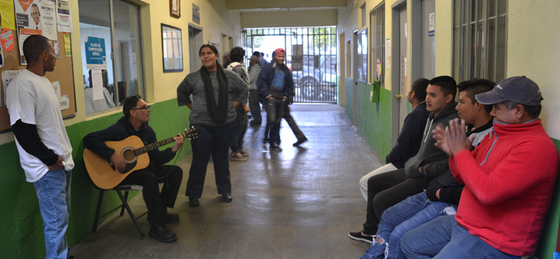
Reflections from the border: Violence, caravans, troops at the border, and hope.
The last couple of months of 2018 are shaping up to be some very interesting times in Tijuana. Several converging themes lead me to paraphrase the great Charles Dickens: "These are the best of times and these are the worst of times." At this moment, there are about 2,500 people waiting in Tijuana for their US political asylum appointments. About 80 percent are from Mexico, and most are women and children. The current wait time for an appointment is at least one month. Most likely, however, 95 percent of those who apply for asylum will be rejected and deported back to their home country. In addition, the imminent arrival of the first of possibly four "caravans" from Central America is not too far away. This group, consisting mostly of Hondurans, will likely arrive in Tijuana in three to four weeks. During the first week of November, around 5,000 Central American migrants arrived in Mexico City. Even earlier in the last few days of October, a trickle of... (read more)
The last couple of months of 2018 are shaping up to be some very interesting times in Tijuana. Several converging themes lead me to paraphrase the great Charles Dickens: "These are the best of times and these are the worst of times." At this moment, there are about 2,500 people waiting in Tijuana for their US political asylum appointments. About 80 percent are from Mexico, and most are women and children. The current wait time for an appointment is at least one month. Most likely, however, 95 percent of those who apply for asylum will be rejected and deported back to their home country. In addition, the imminent arrival of the first of possibly four "caravans" from Central America is not too far away. This group, consisting mostly of Hondurans, will likely arrive in Tijuana in three to four weeks. During the first week of November, around 5,000 Central American migrants arrived in Mexico City. Even earlier in the last few days of October, a trickle of... (read more)
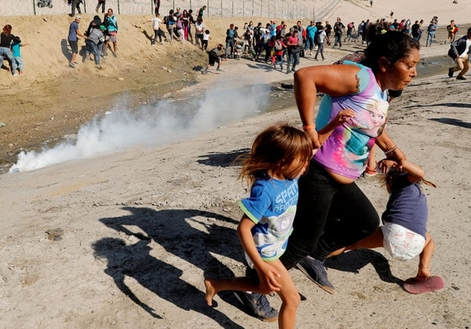
The story behind the photo of a family running from tear gas at the U.S.-Mexico border. When U.S. border agents fired tear gas at migrants attempting to cross through a barbed wire fence at the U.S.-Mexico border on Sunday, a single photo became a widely shared symbol of the crisis. The image shows a mother dragging her daughters away from gas canisters shot at them from the American side of the U.S.-Mexico border near Tijuana. The two children are both in diapers. One is barefoot, and her tiny feet look fragile on the grey and rocky ground. Veteran Reuters photographer Kim Kyung-Hoon tells TIME that he had been photographing the caravan, including some of the 5,000 people camped out at the border, for about two weeks when he captured that emotional shot on Nov. 25. At around 10 a.m. Kim was at a shelter in Tijuana when he noticed that many of the migrants were making a move toward the border. He decided to follow them. Kim walked along with about a hundred migrants, including many women and children, as they made their way across a shallow... (read more)
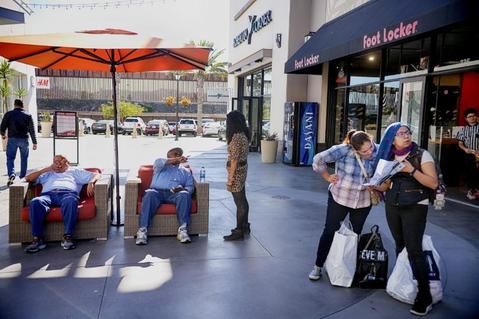
A critical time': Border businesses jolted by $5.3 million loss in crossing shutdown. It should have been a bustling Sunday at the sprawling outdoor mall abutting the Mexican border here. The Christmas sales were supposed to pack the parking lot that runs along a barbed wire fence in San Ysidro, one of the busiest border crossings in the world. But instead of a post-Thanksgiving rush, San Ysidro was a scene of tense chaos over the weekend, with United States border agents firing tear gas over the border at hundreds of Central American migrants trying to storm the fence. The border crossing was shut down entirely for more than five hours, and for the first time in the nearly two decades since the Las Americas outlet mall opened, it closed its doors for the day. The economic impact was deep and immediate in the border area, where retail businesses depend on cross-border traffic - at least 90 percent of retail customers in San Ysidro come from Mexico, according to the local Chamber of Commerce. Sunday's shutdown meant a loss of an estimated $5.3 million for the 650 businesses in the area, said... (read more)



